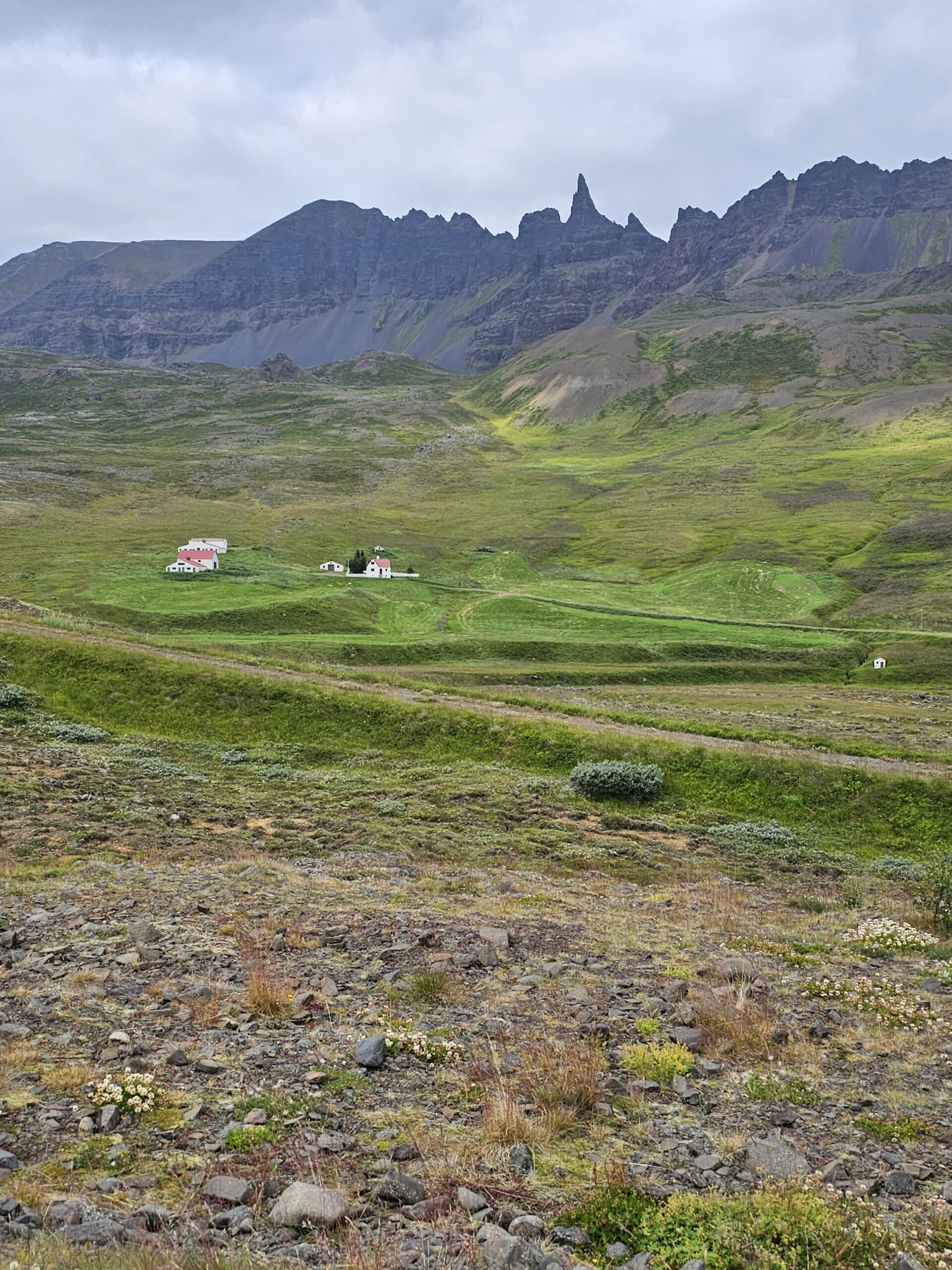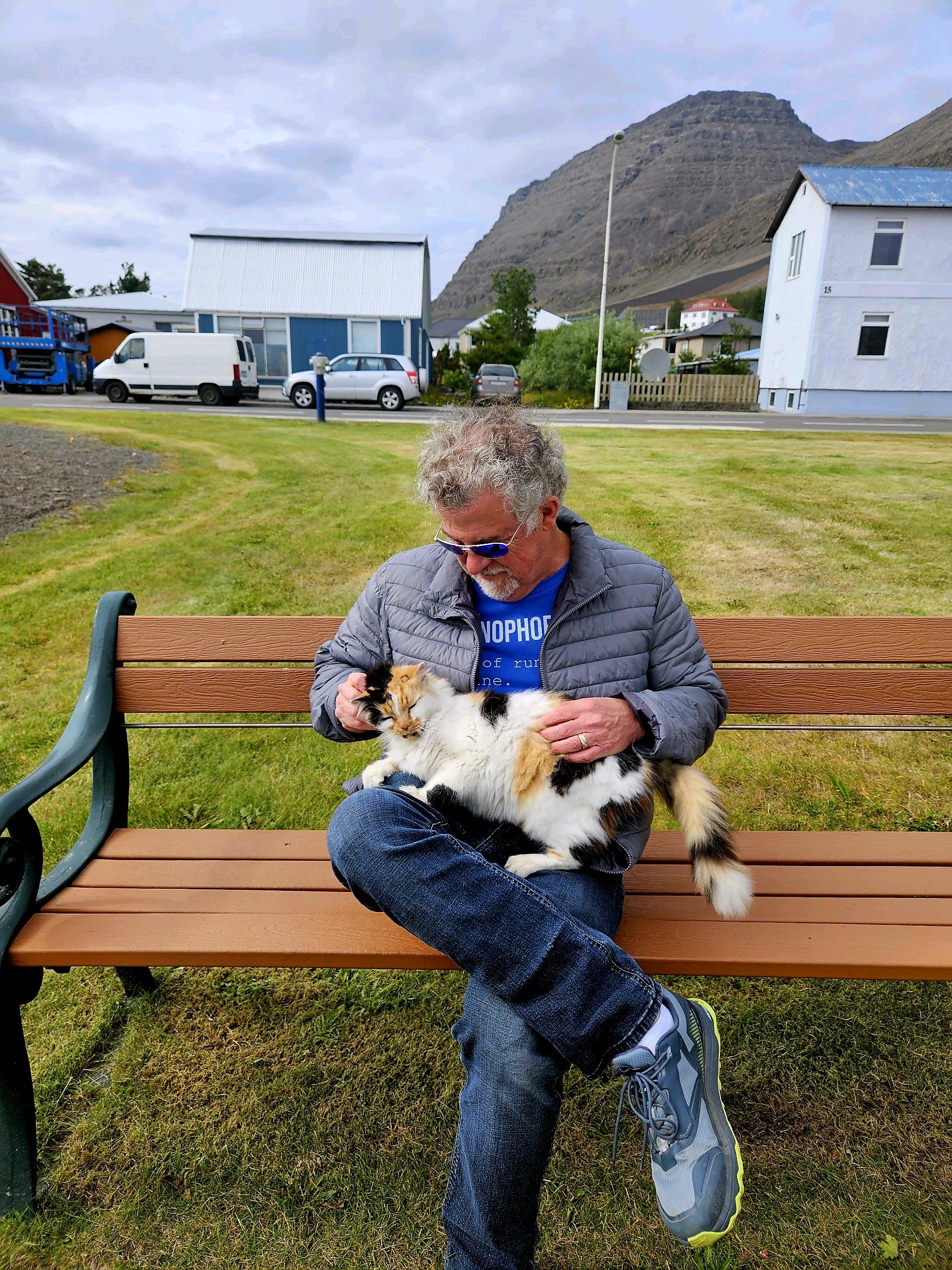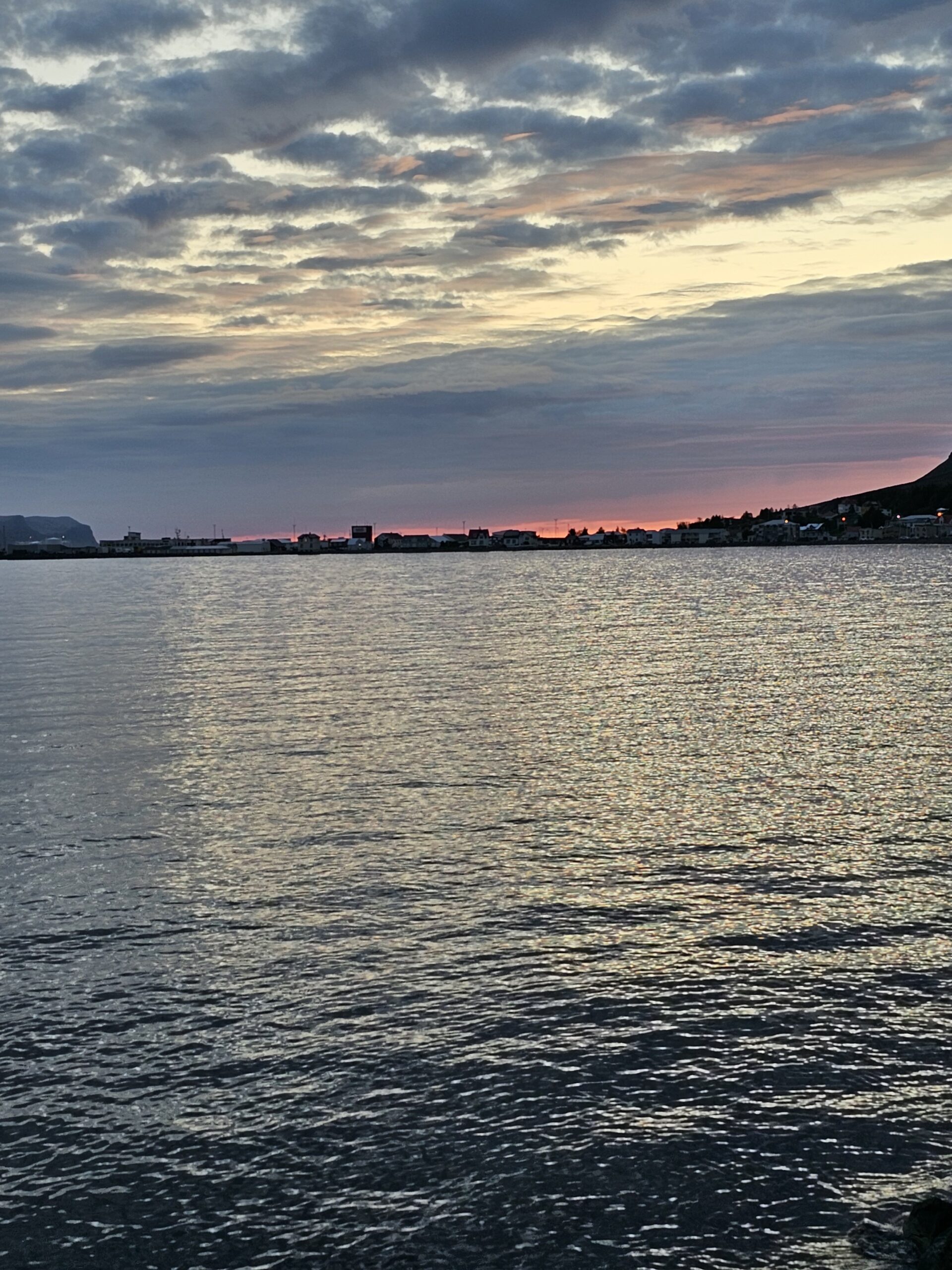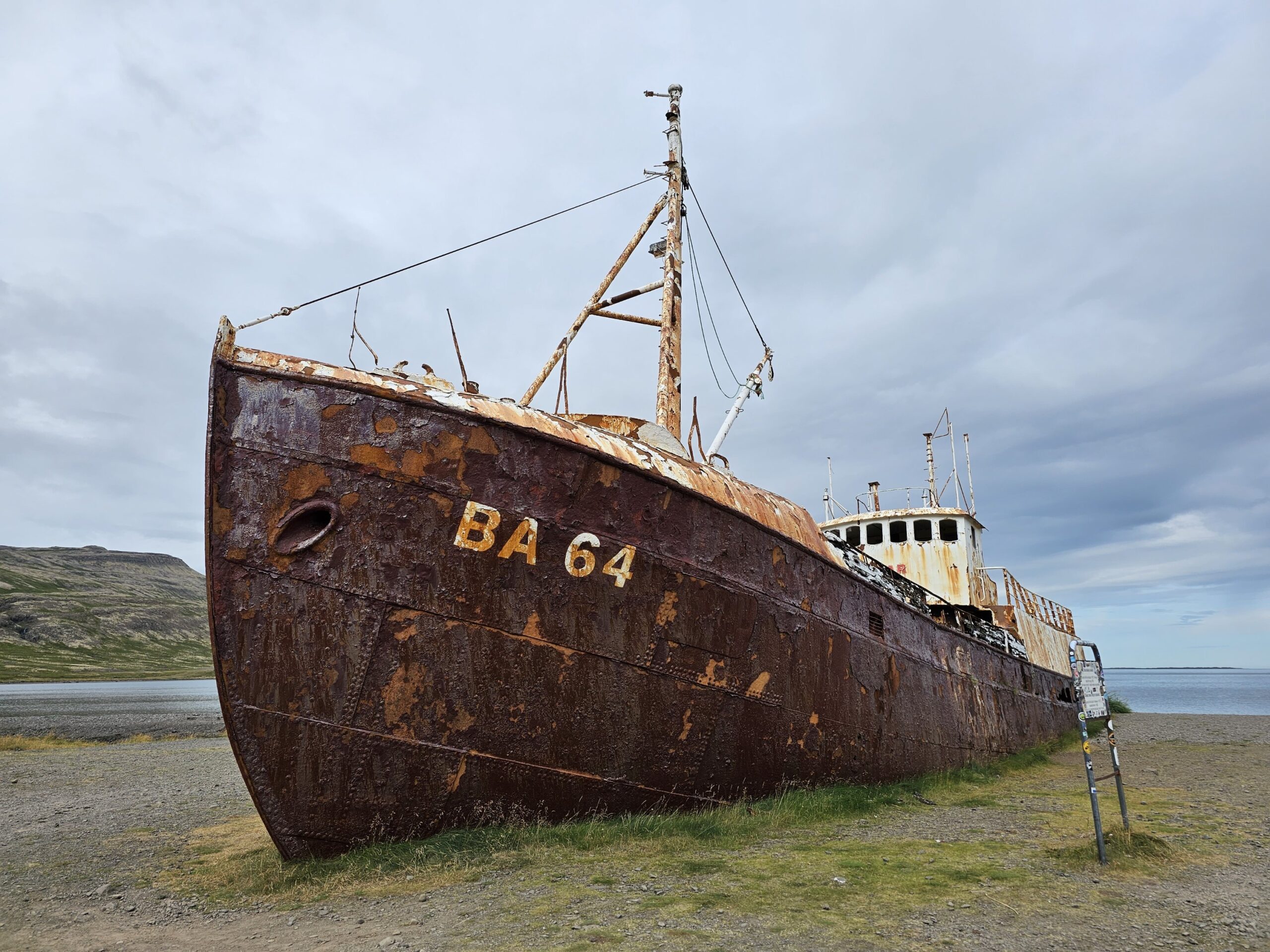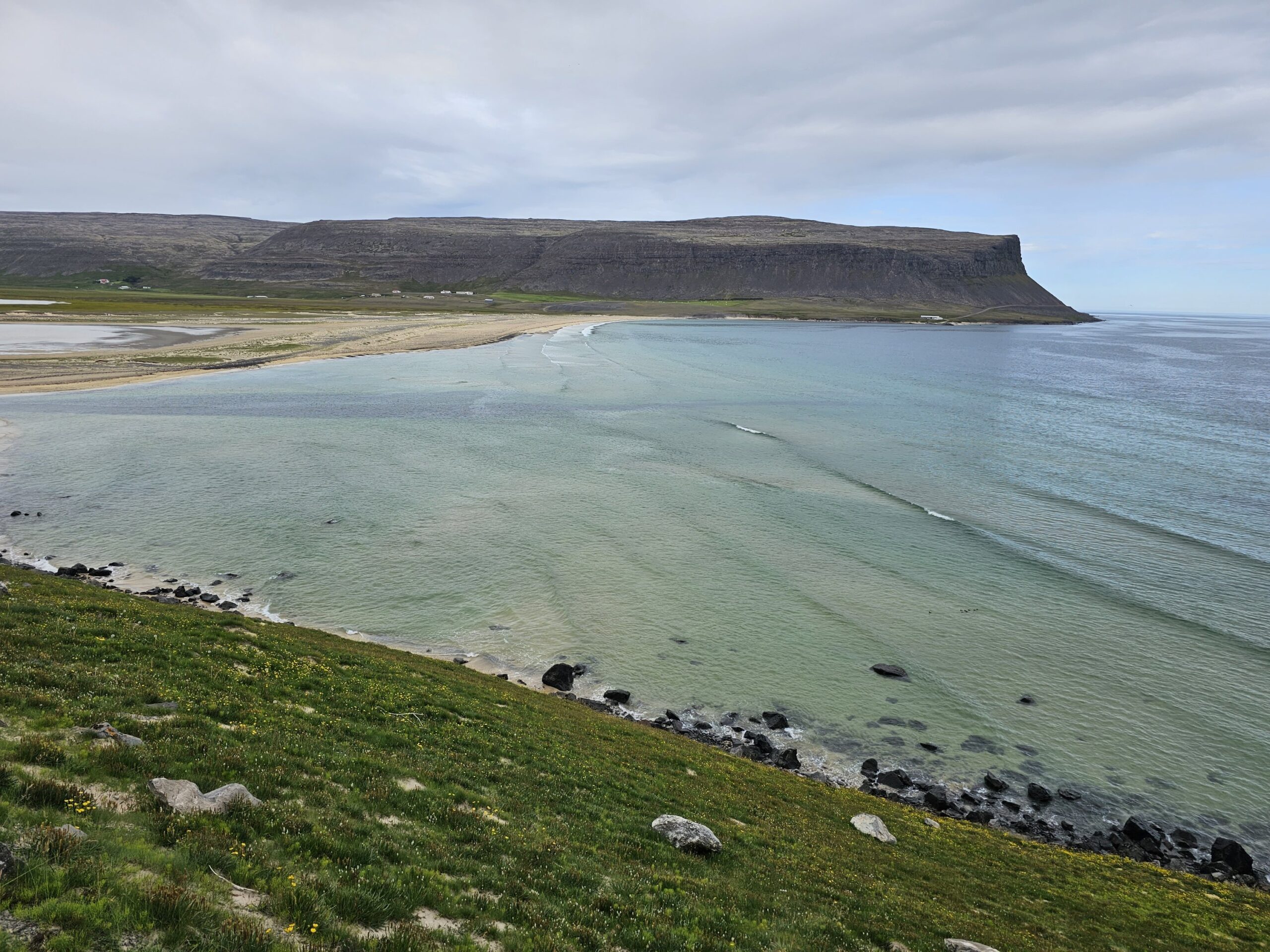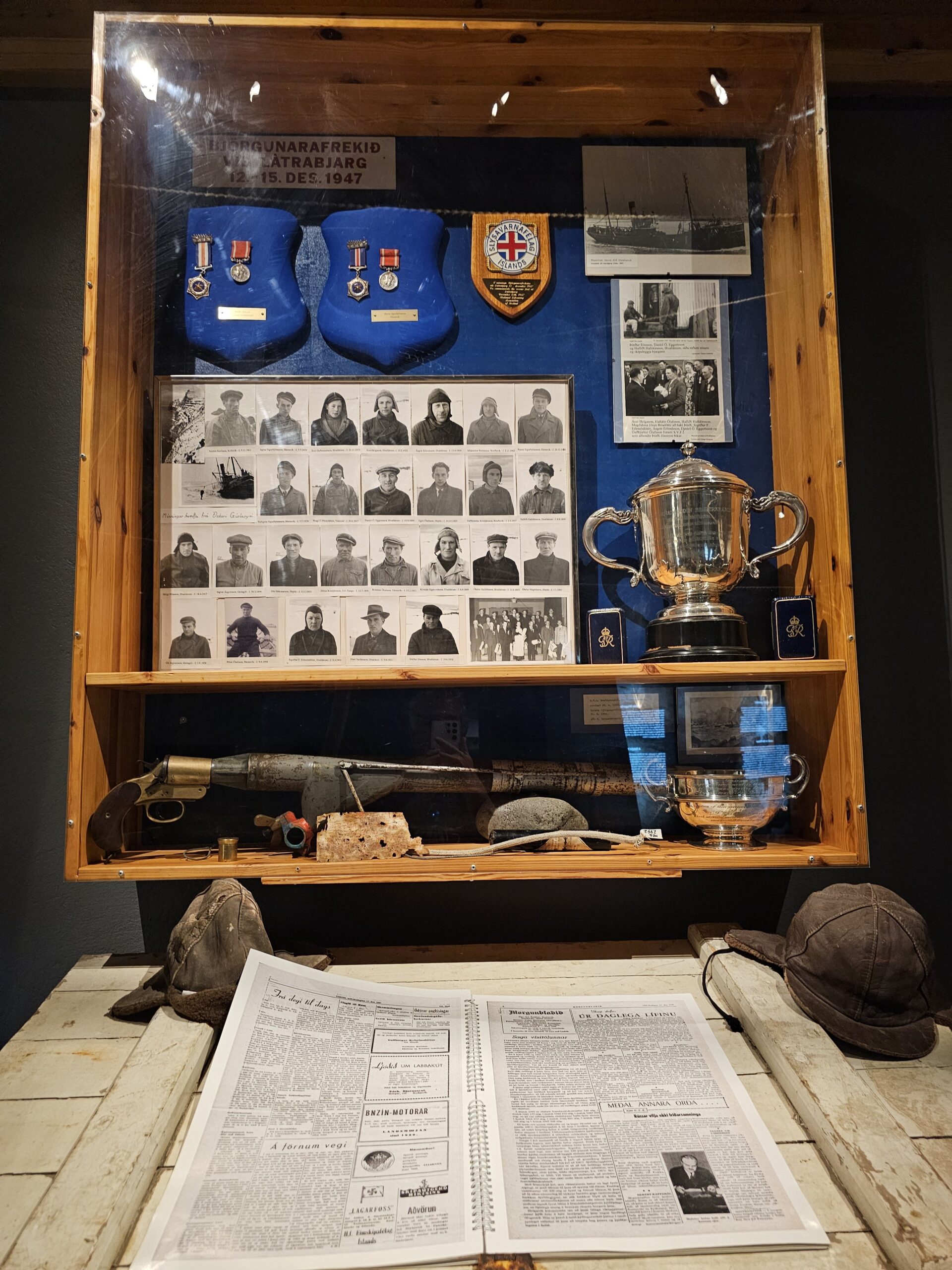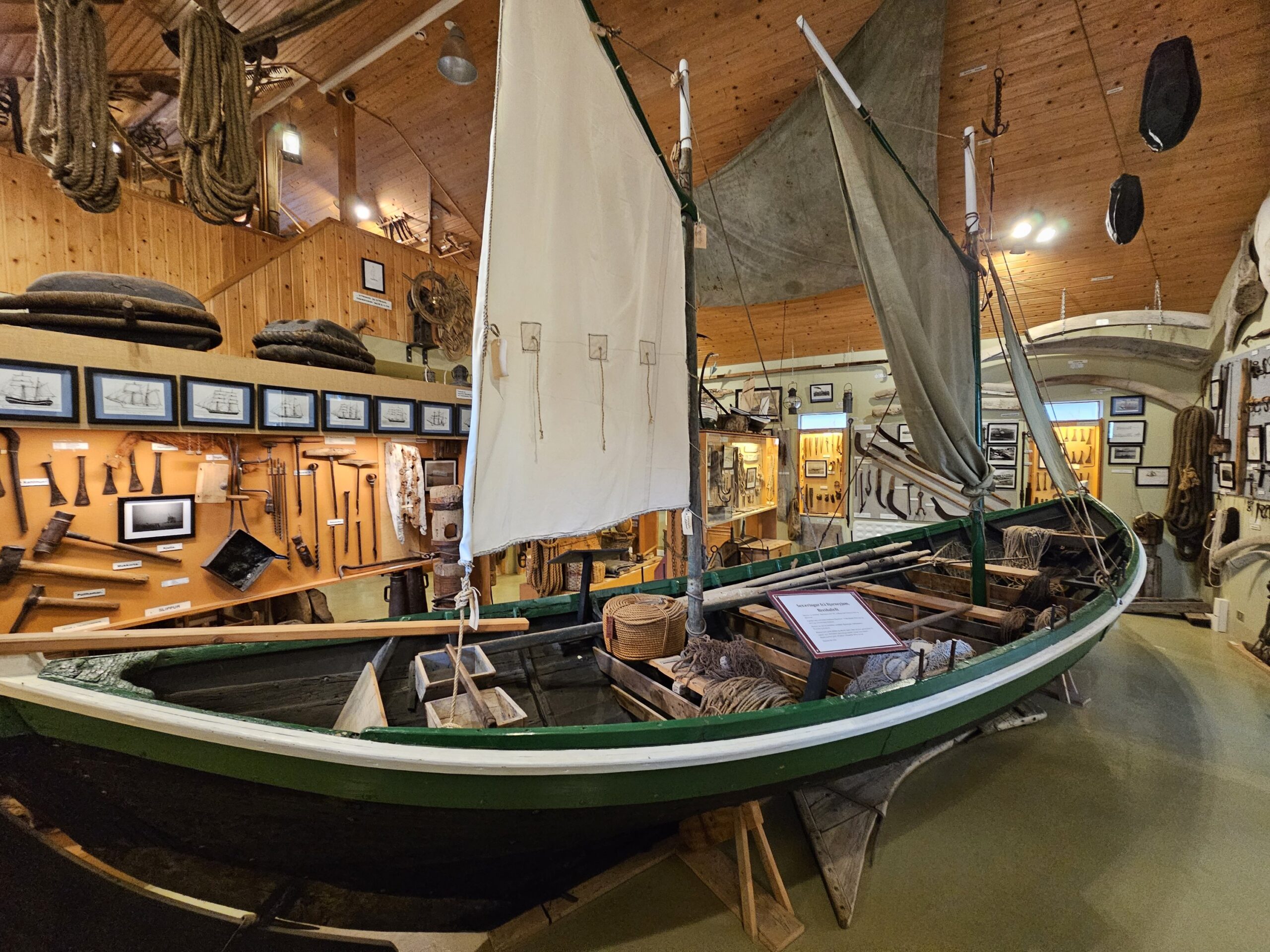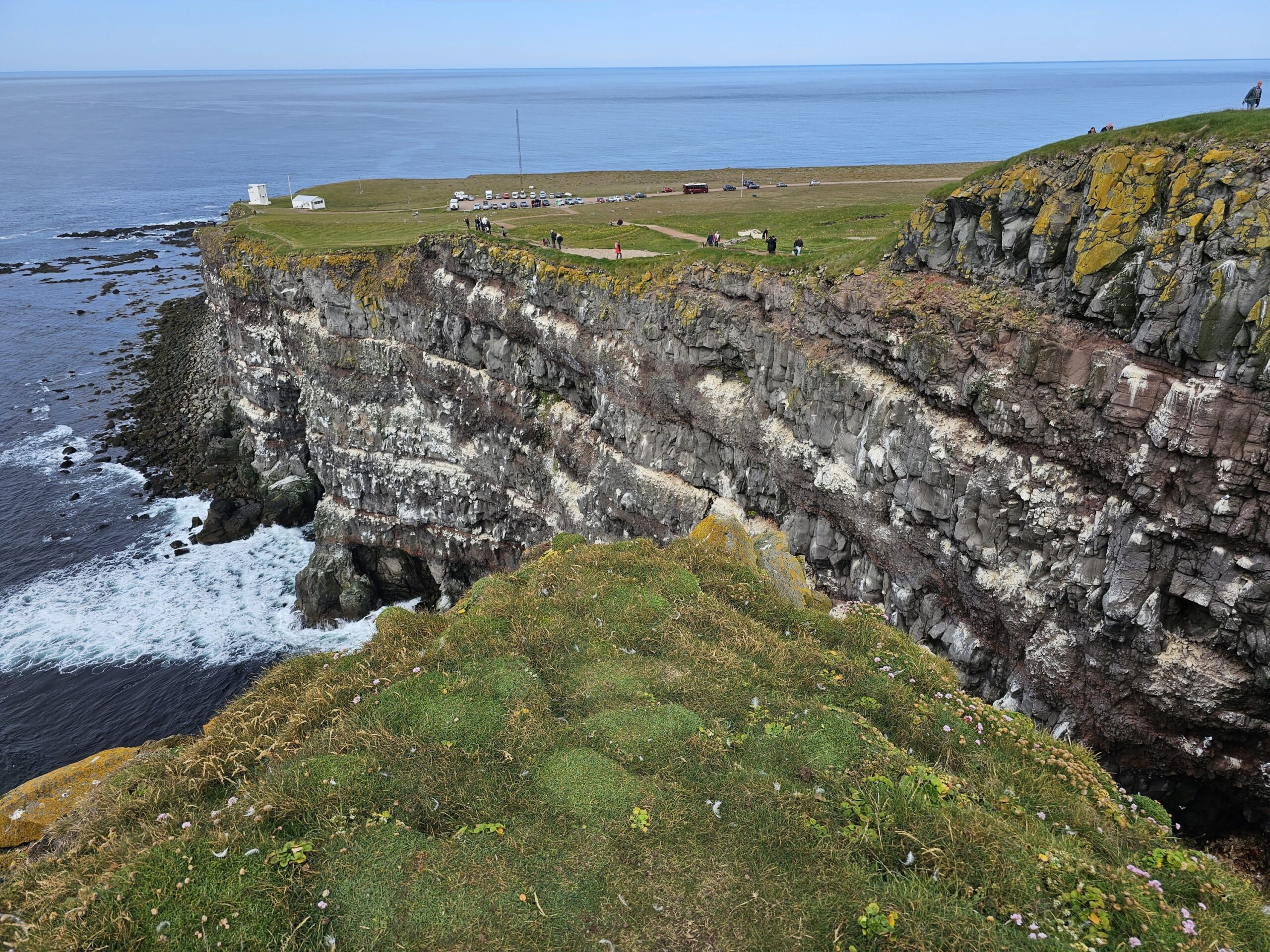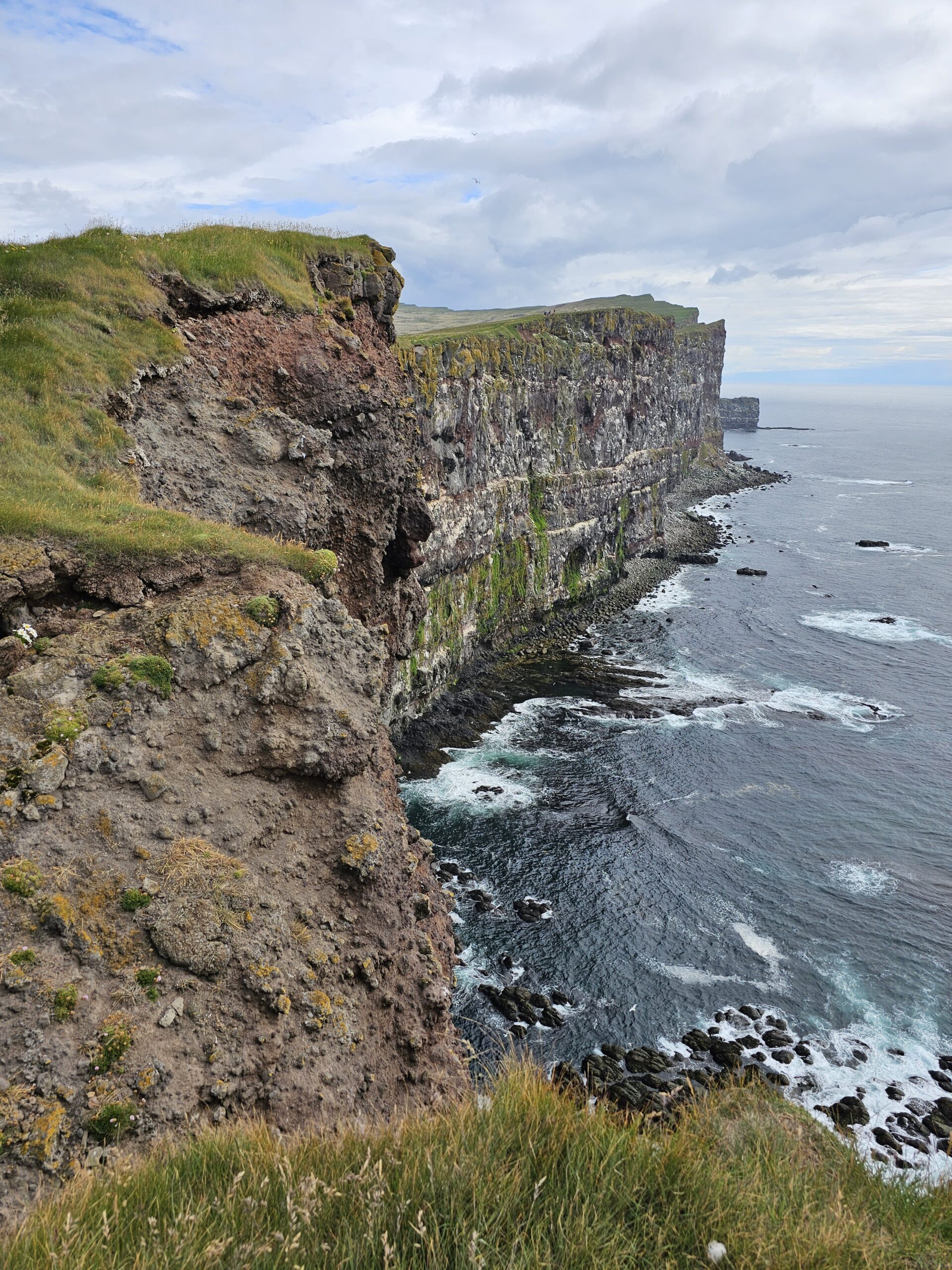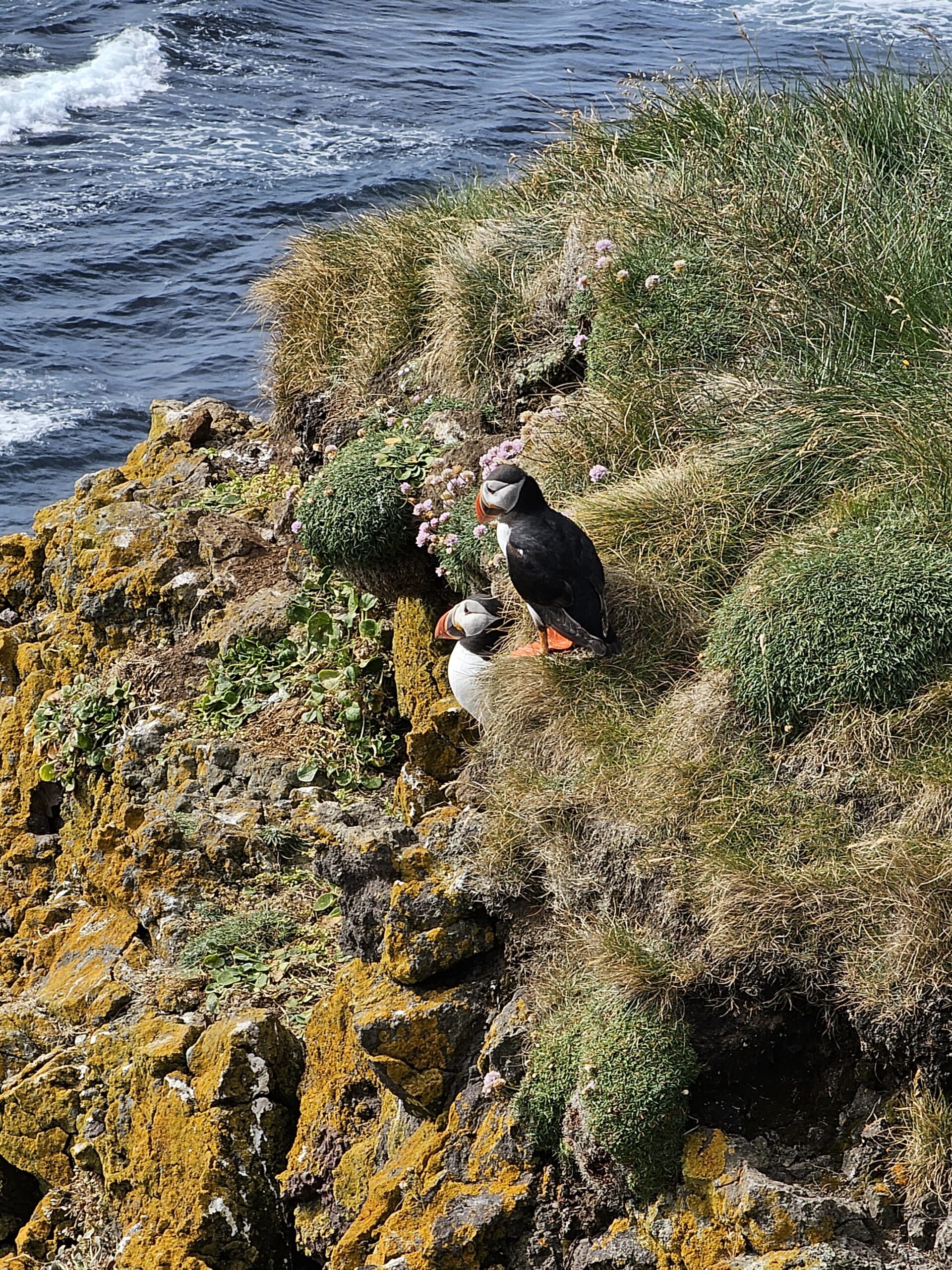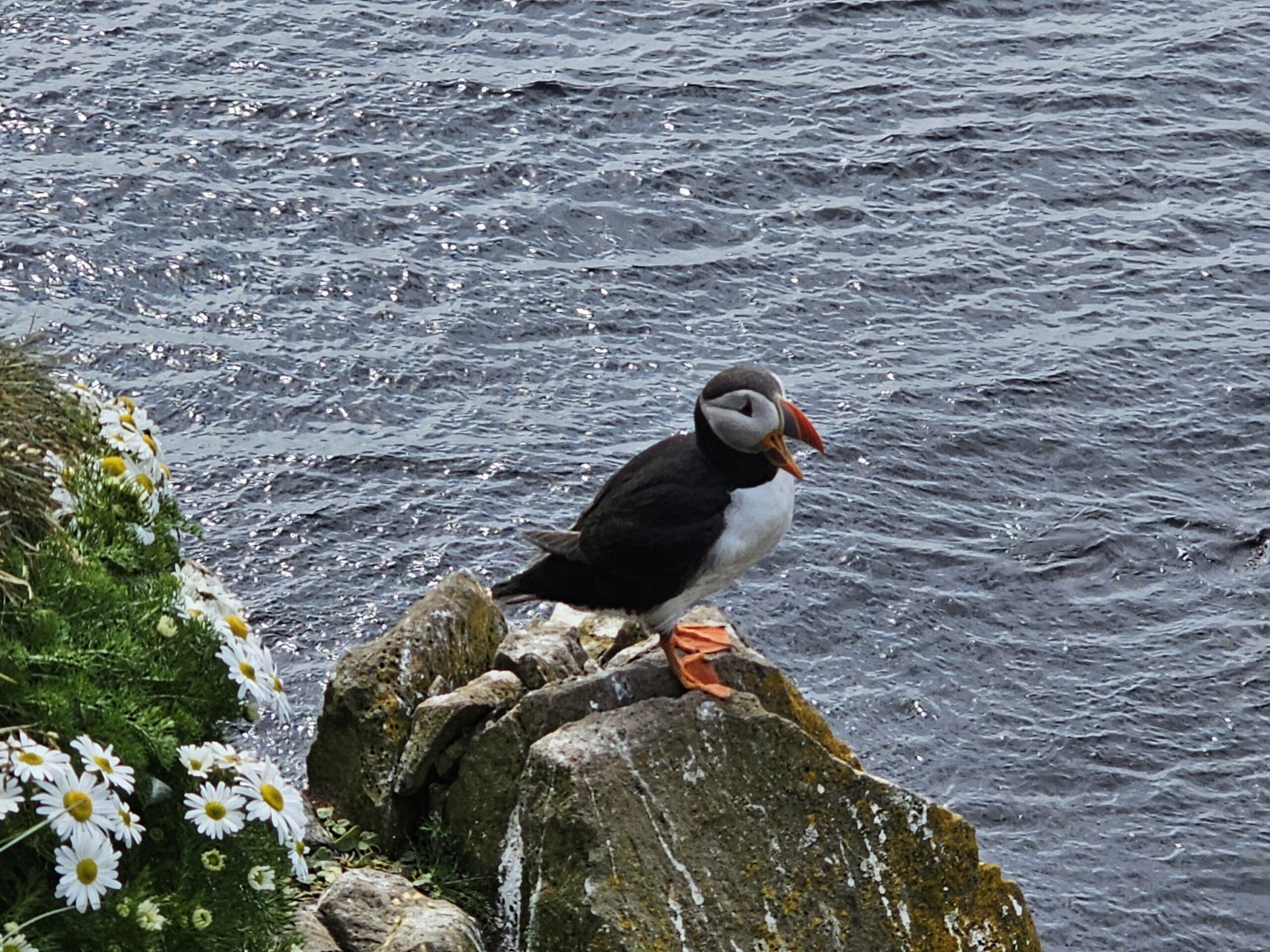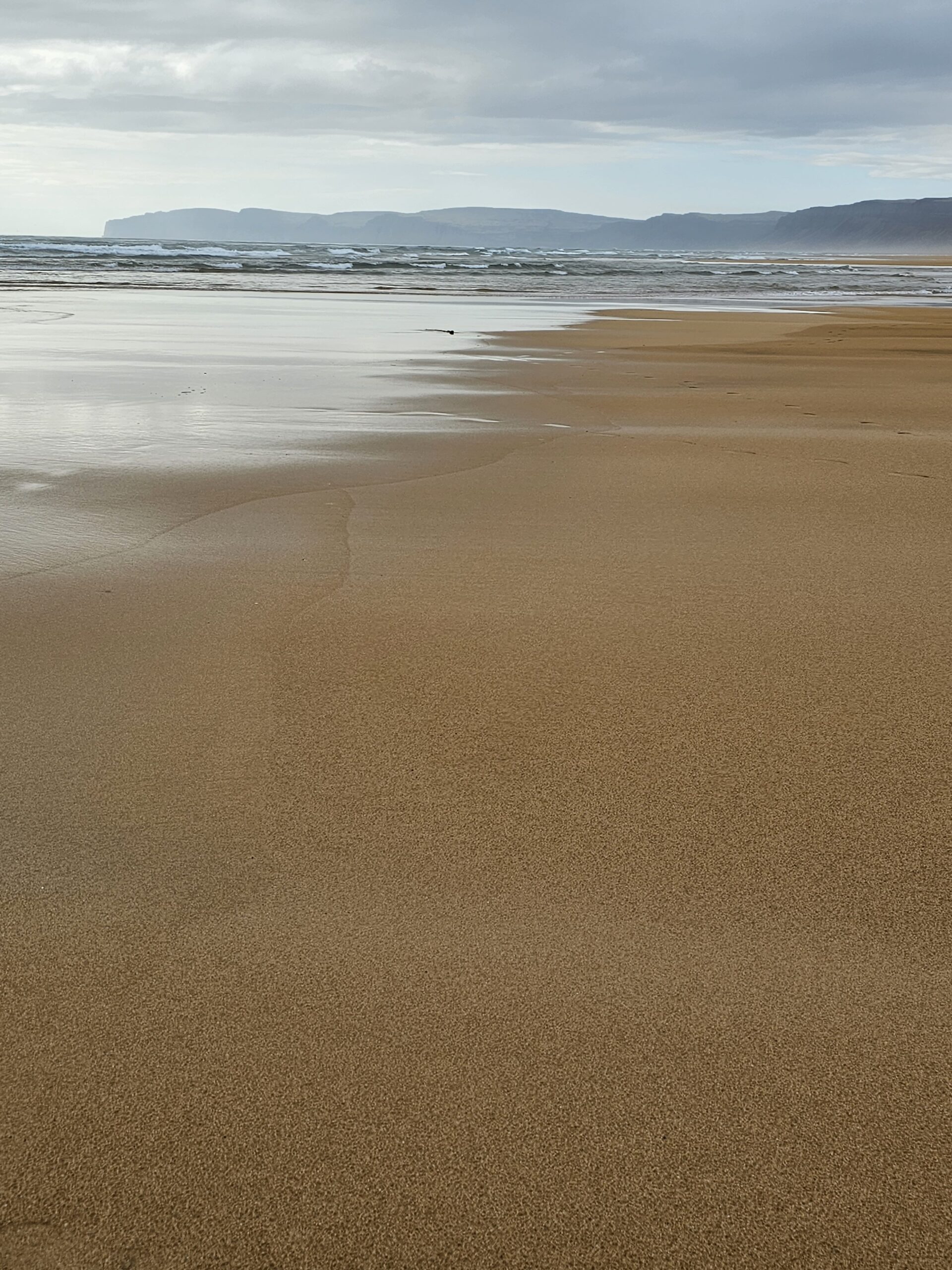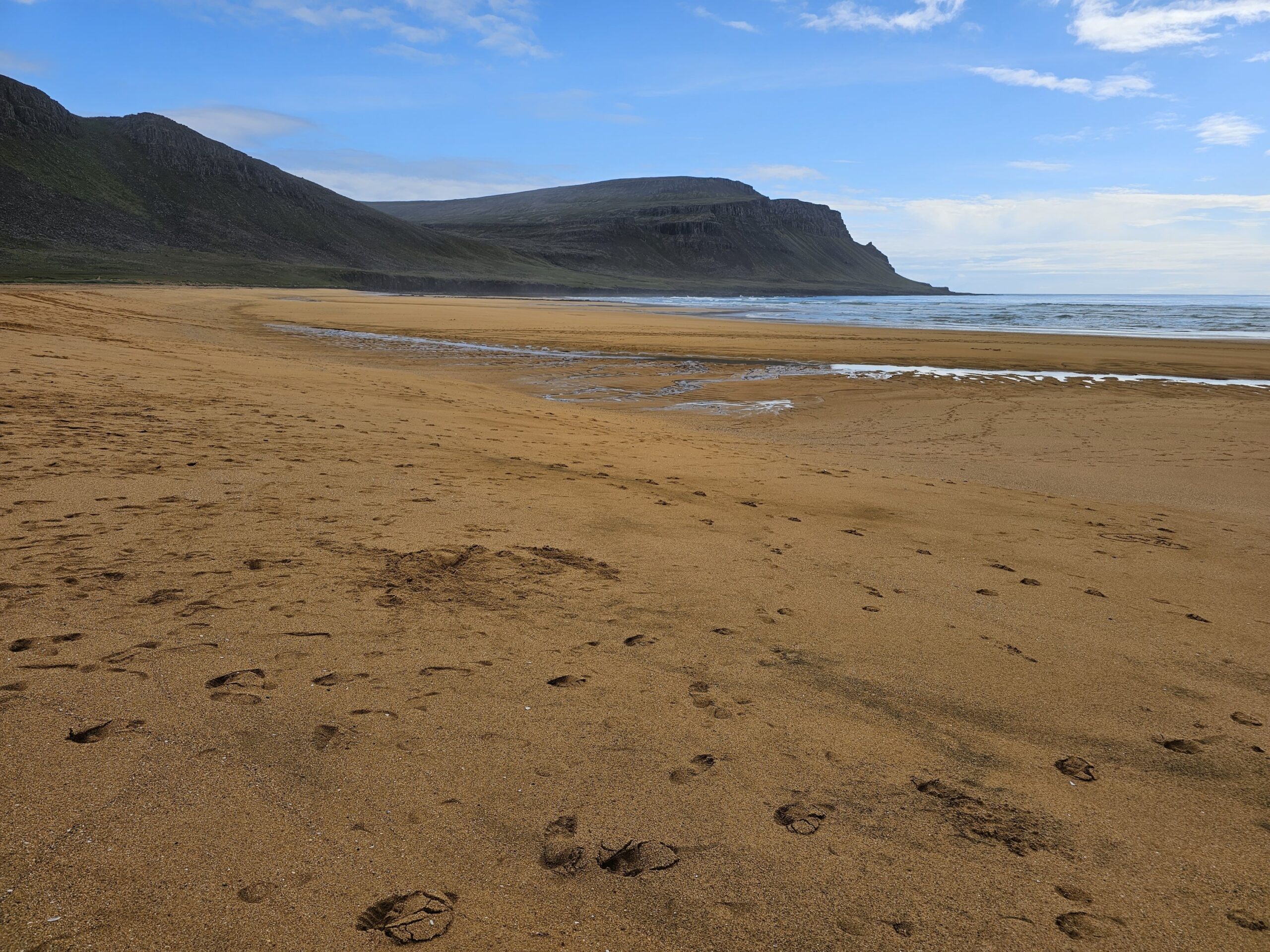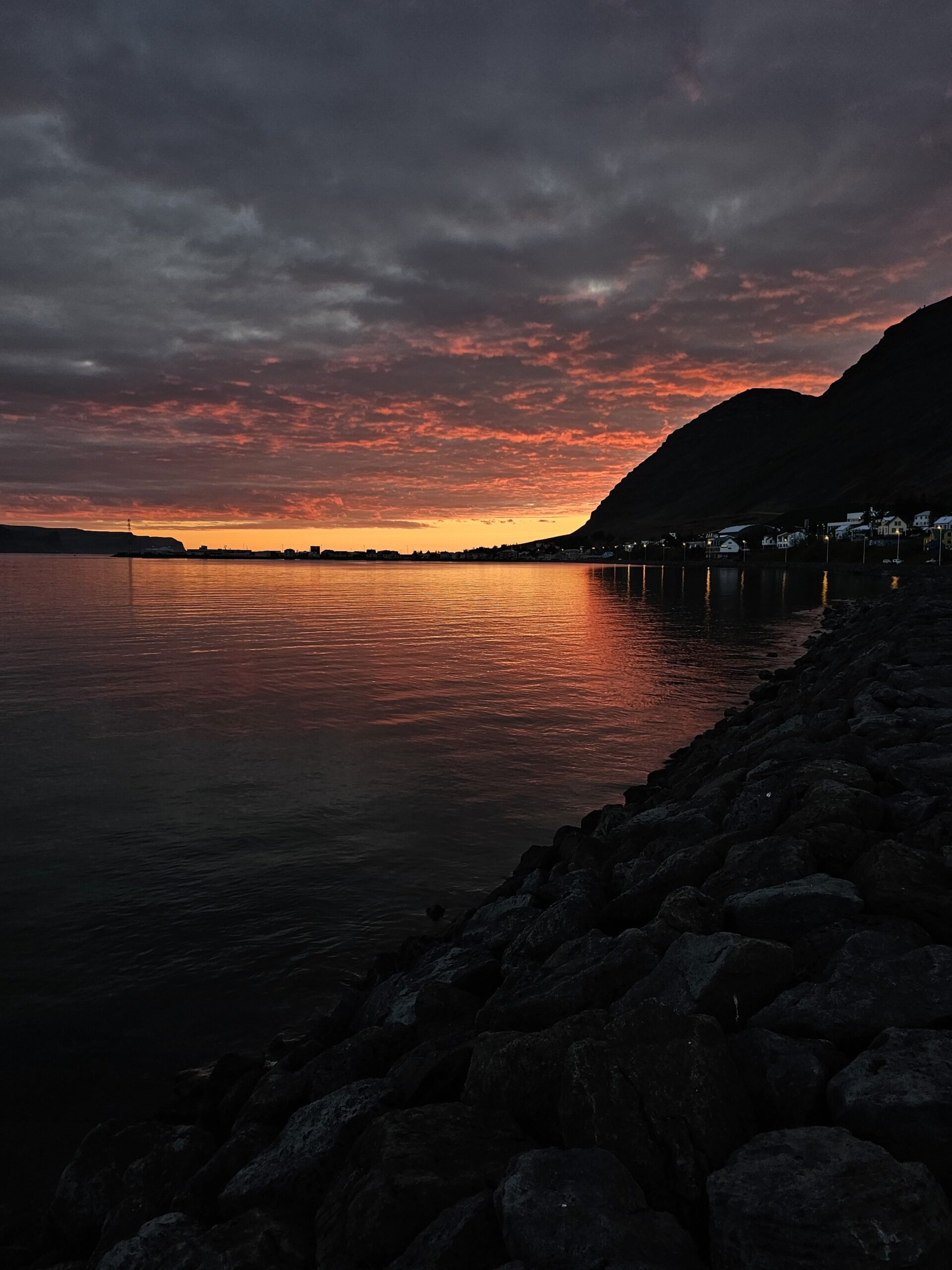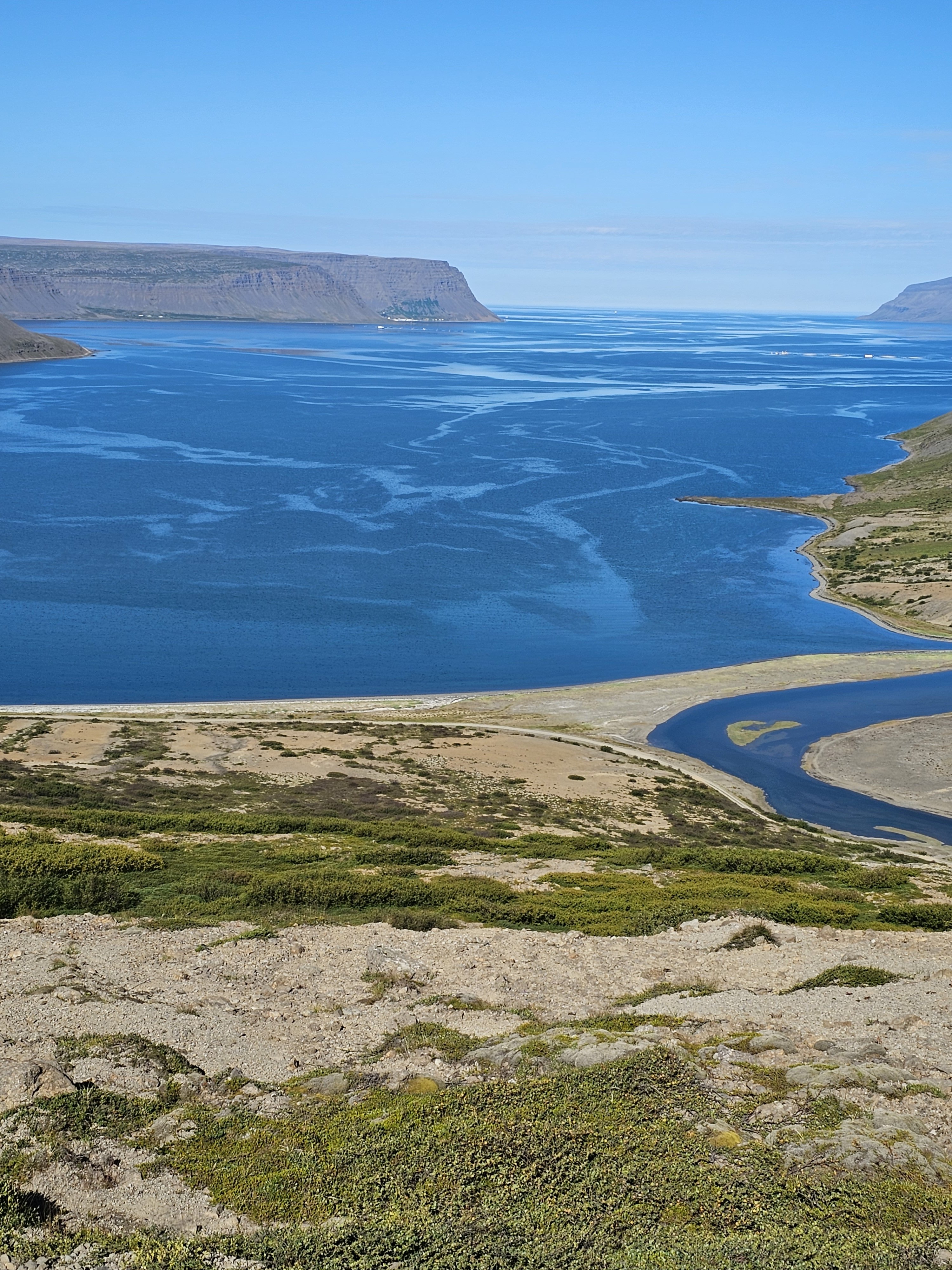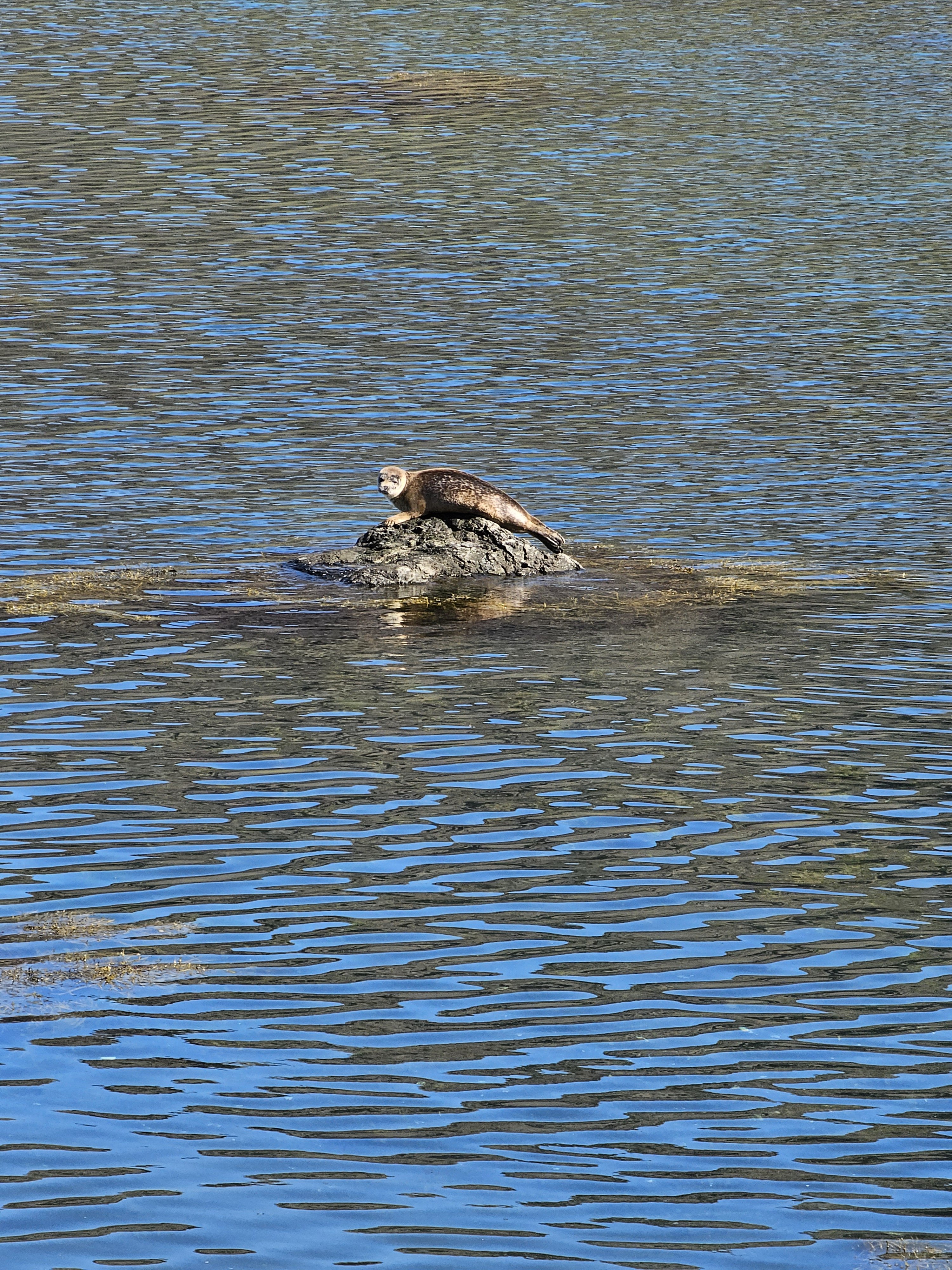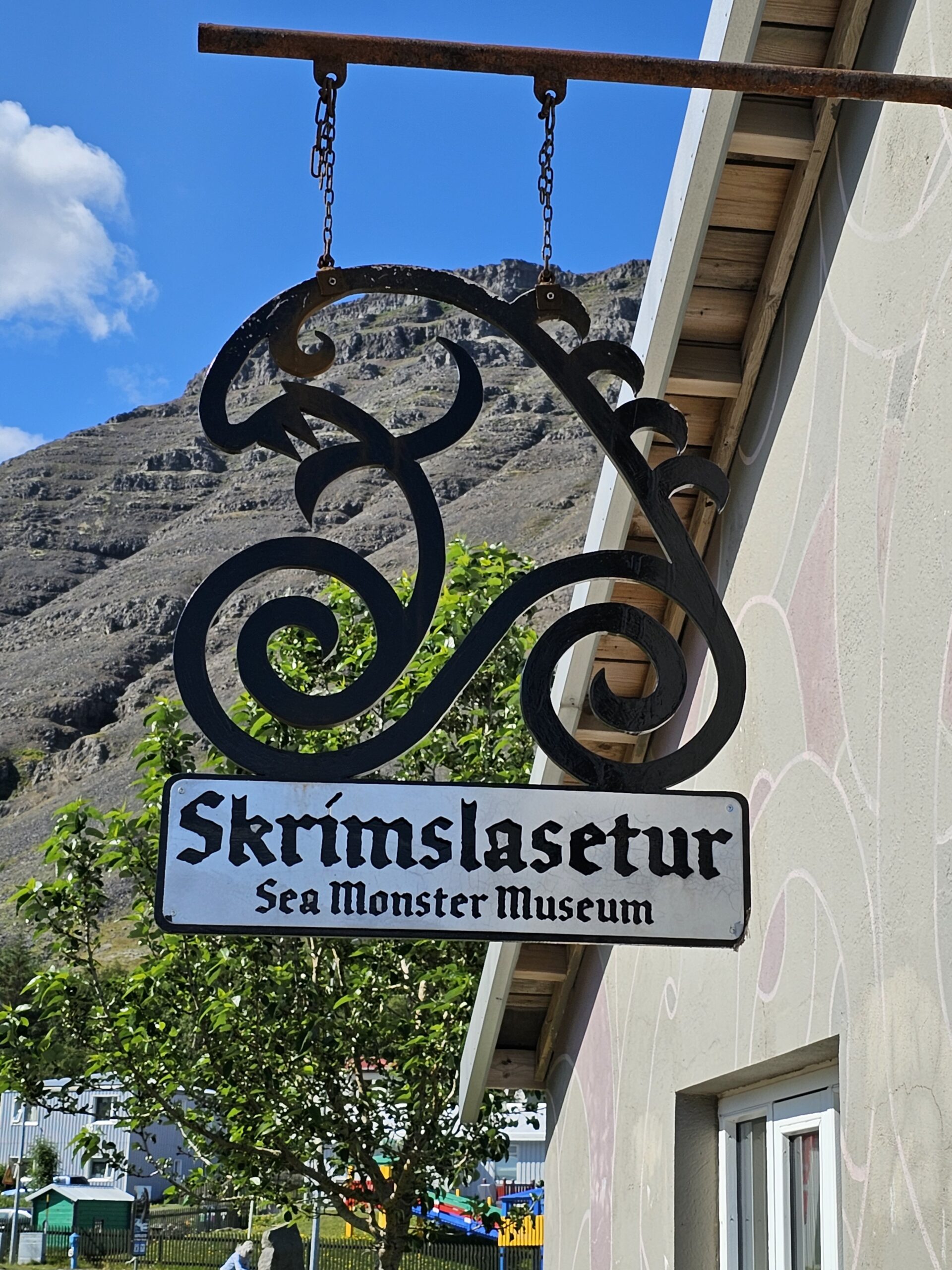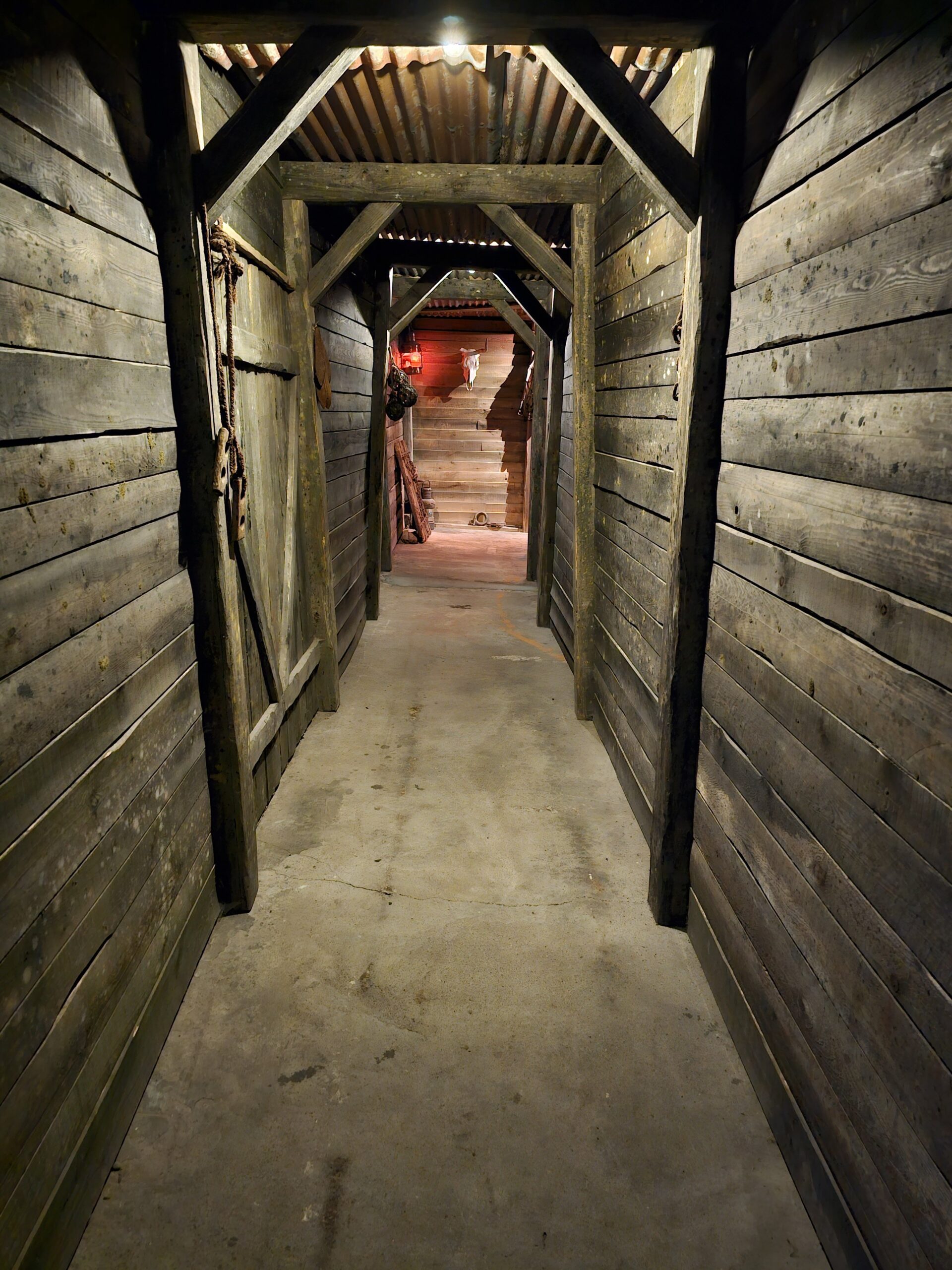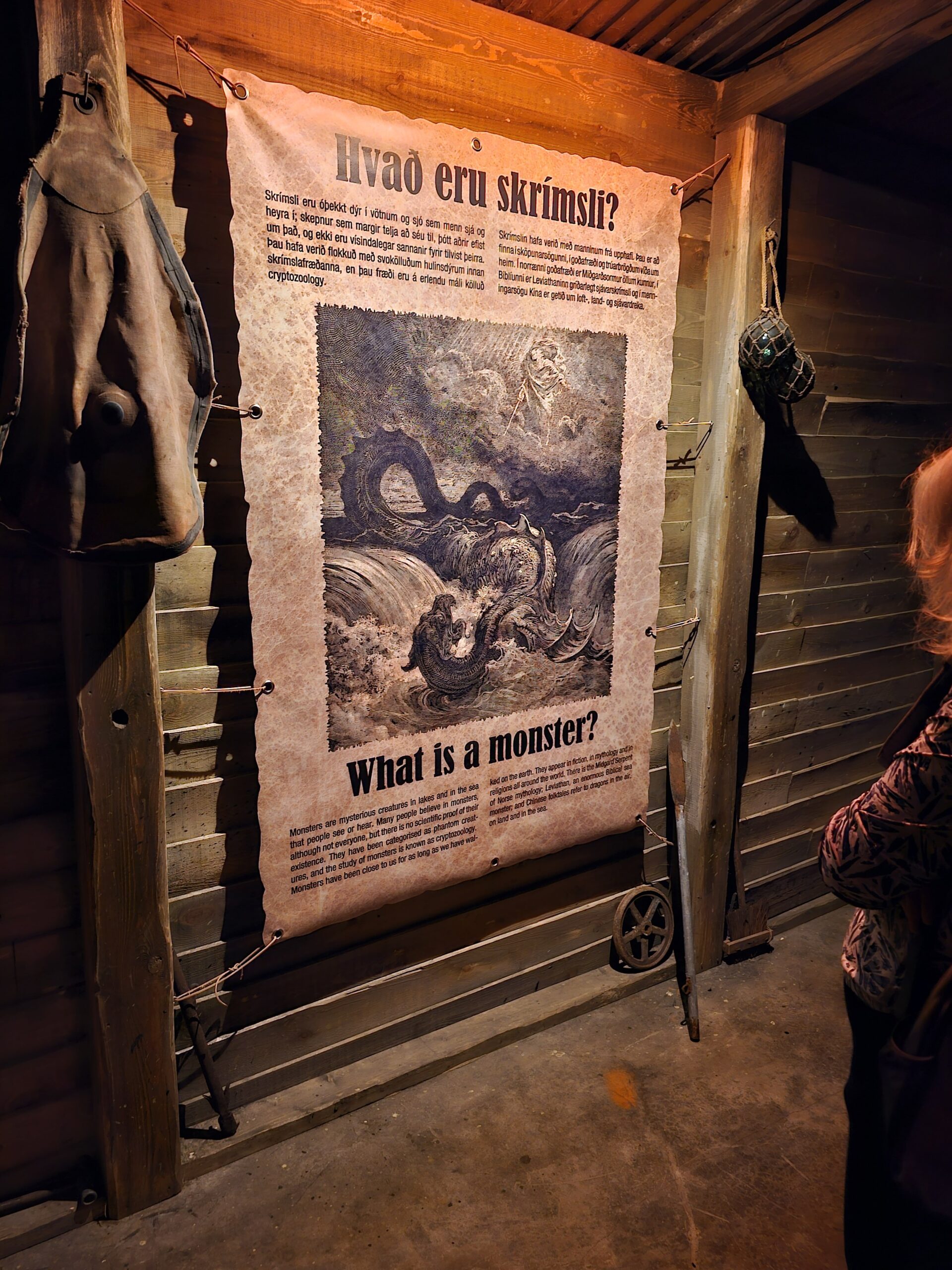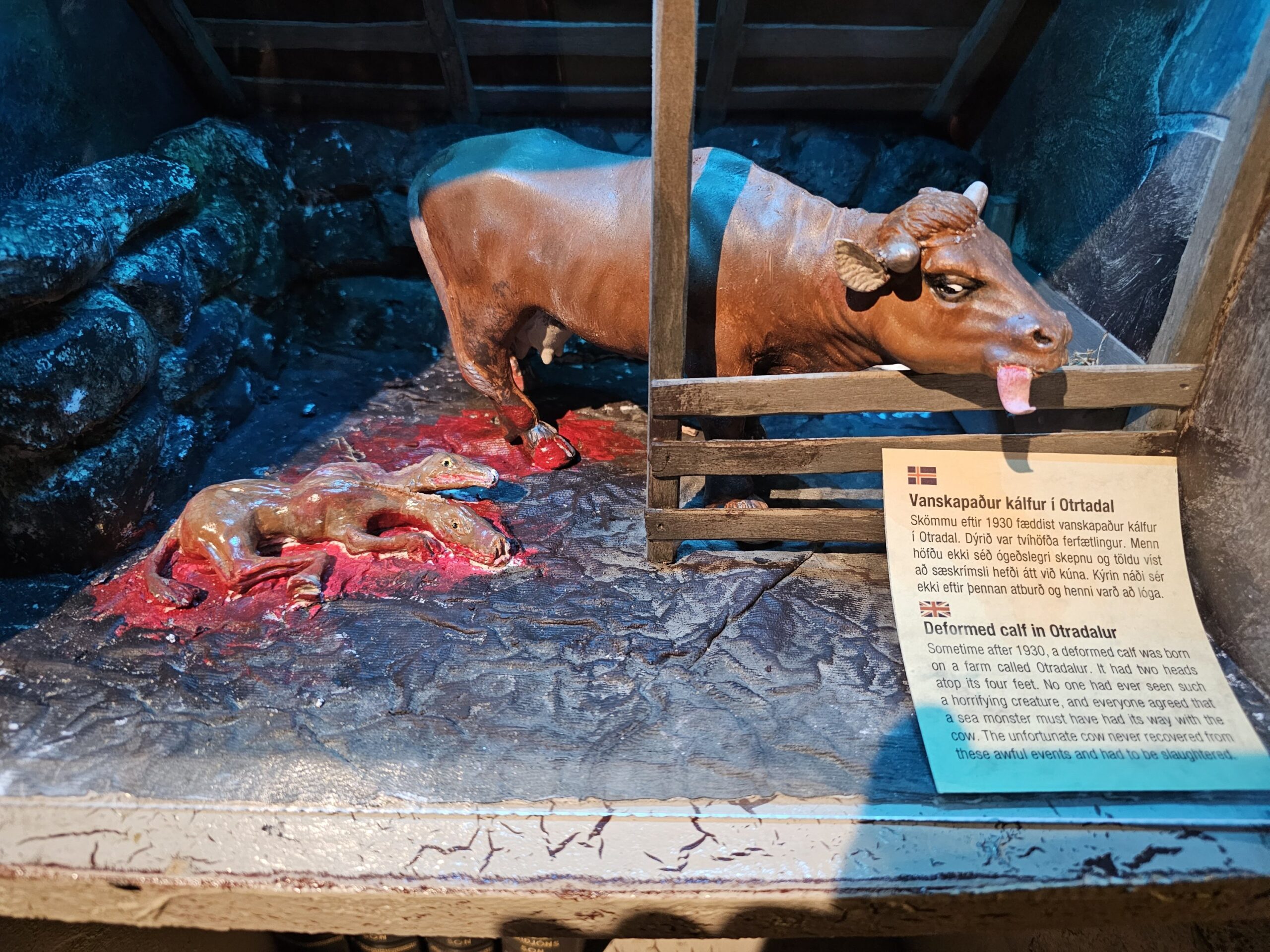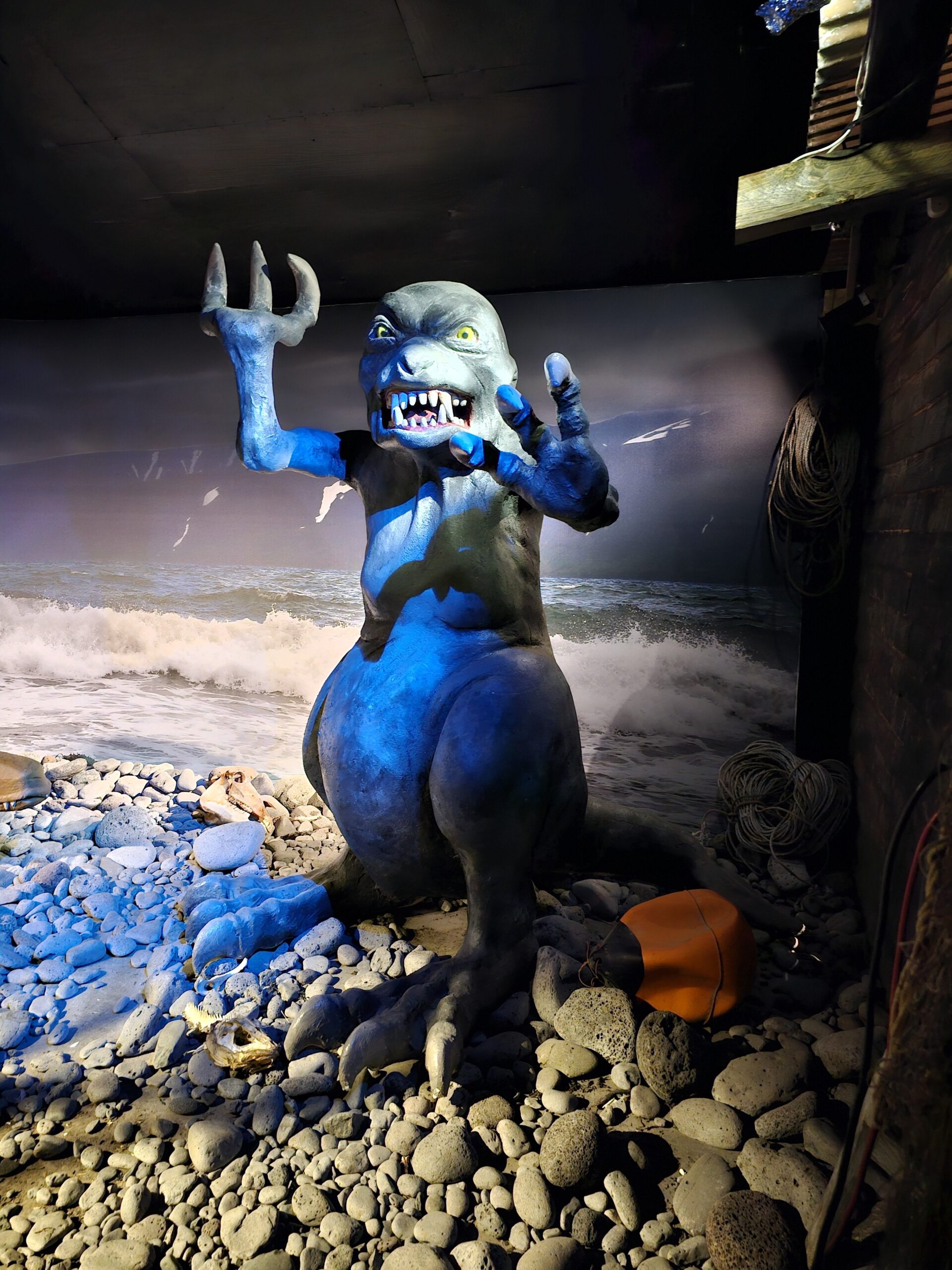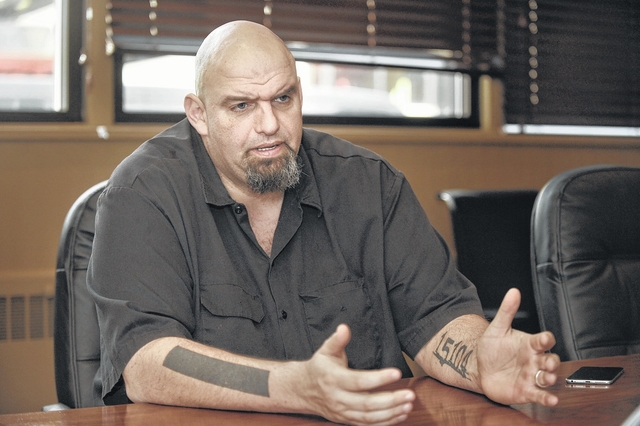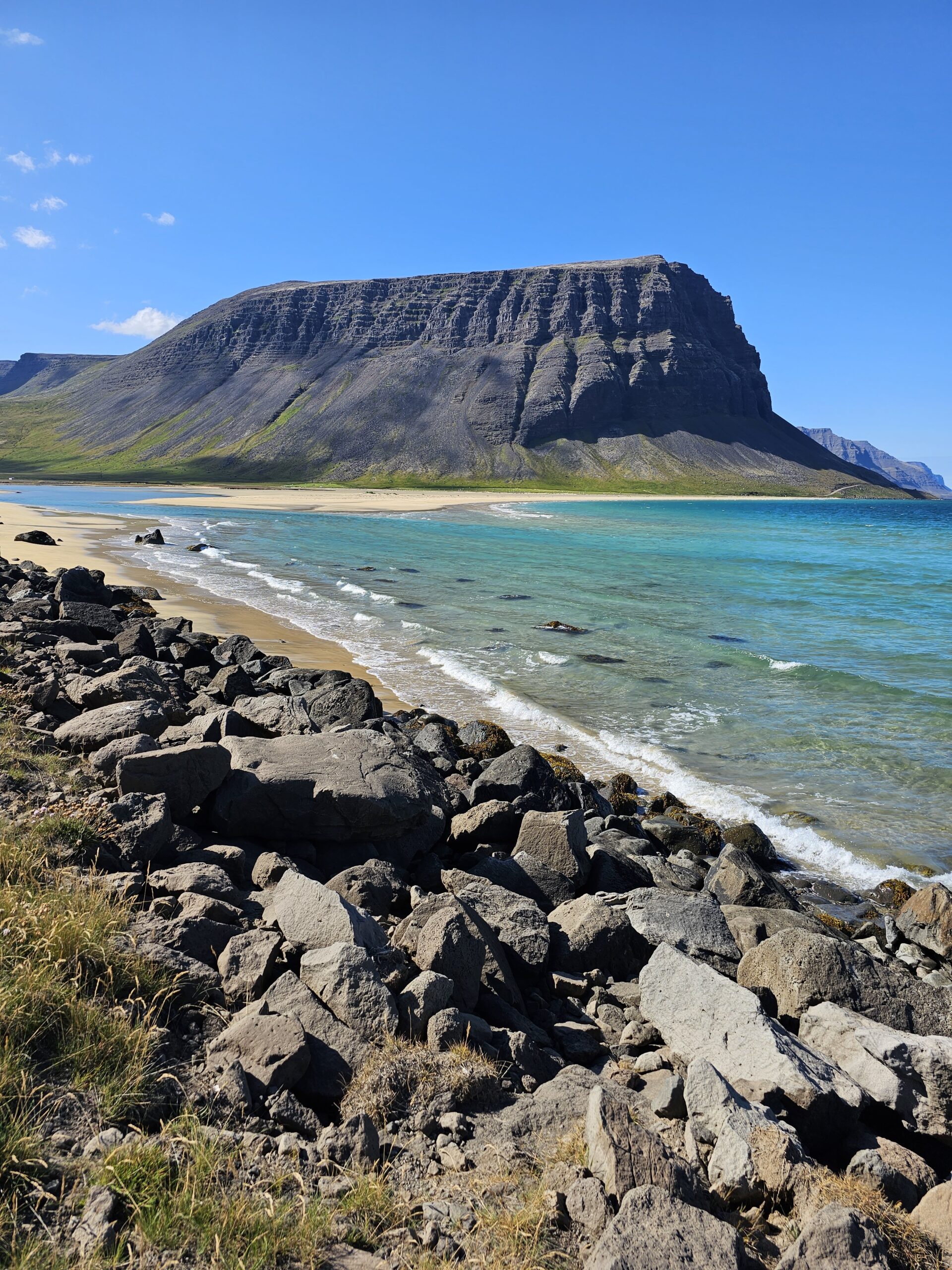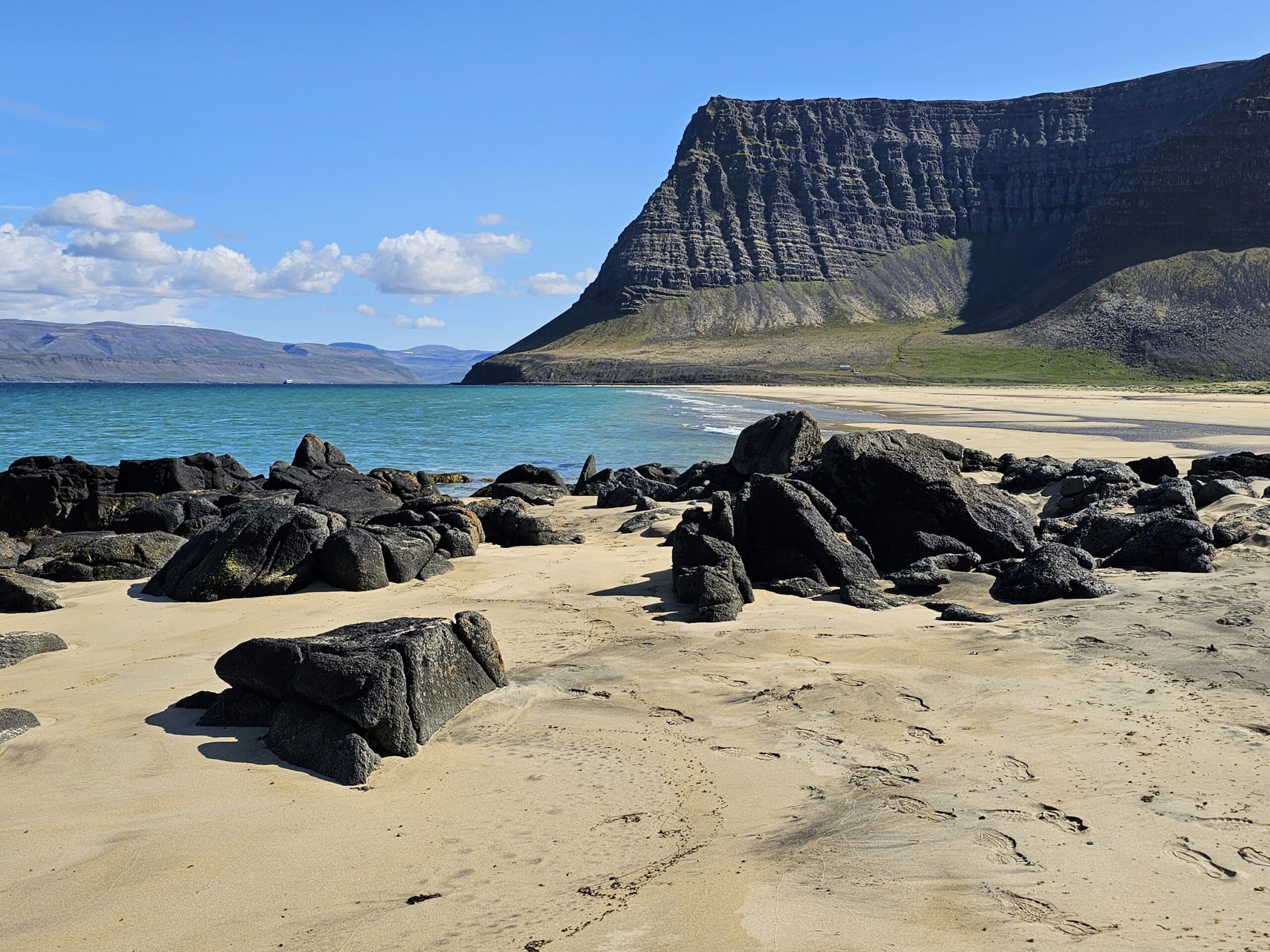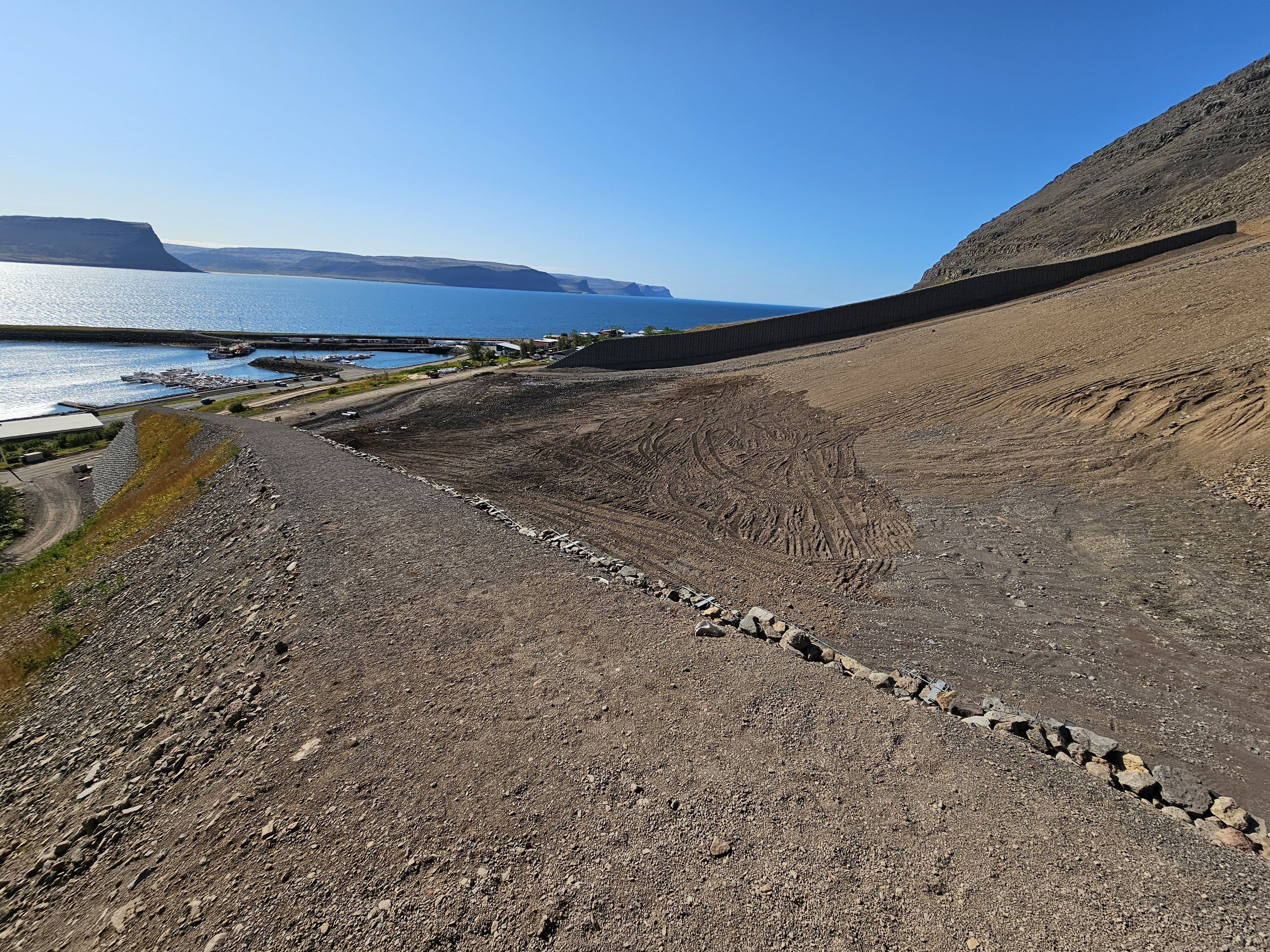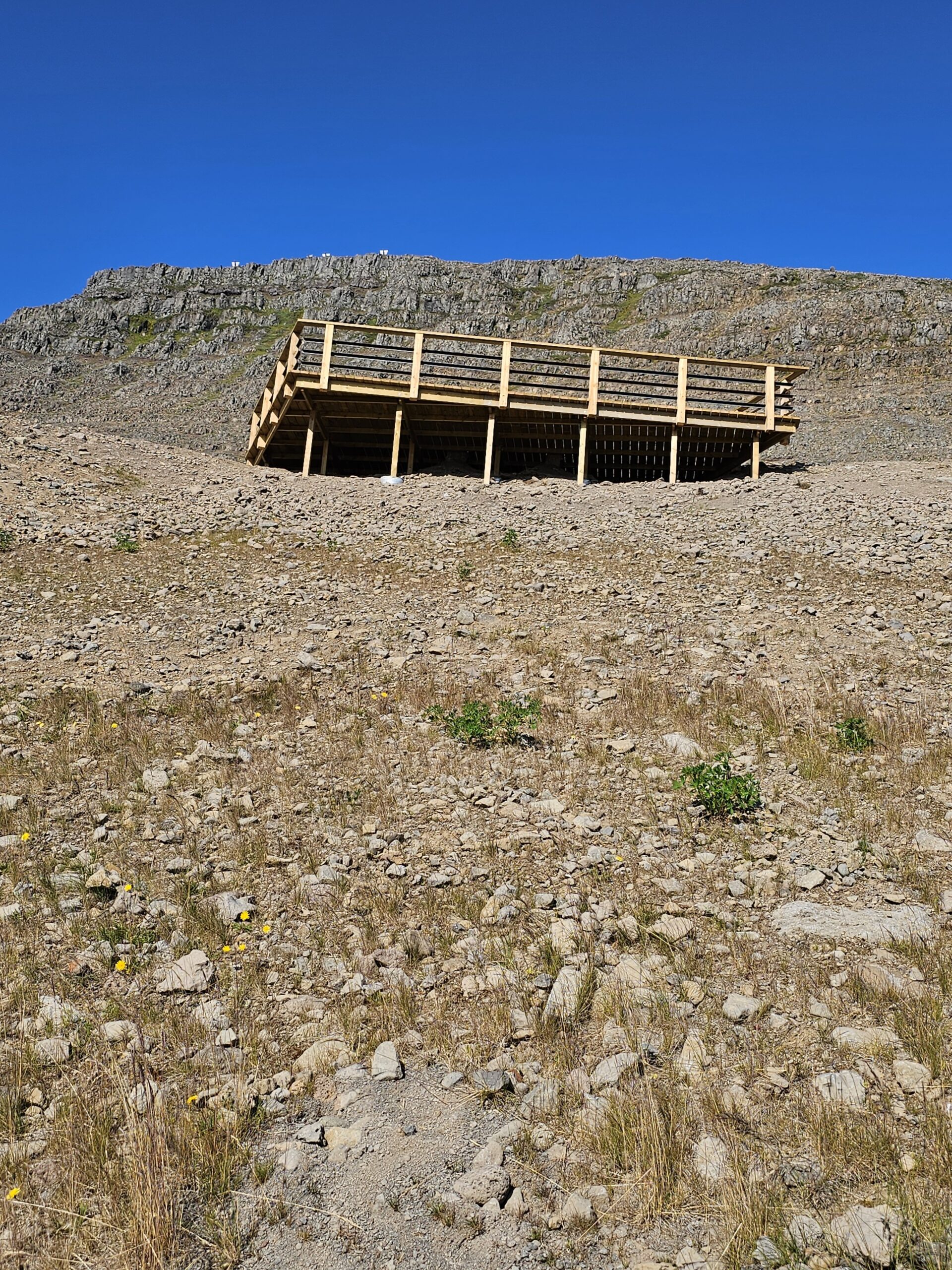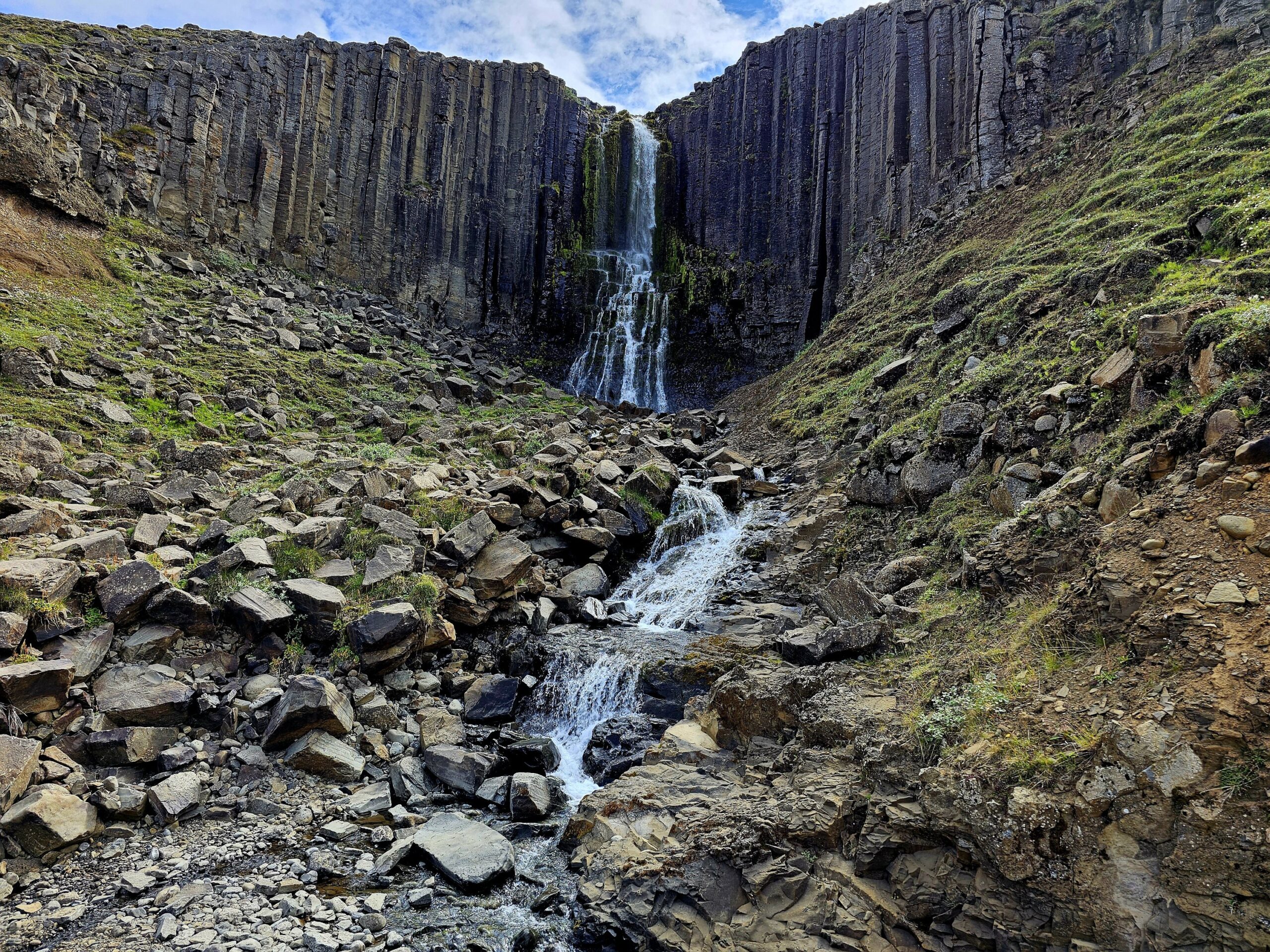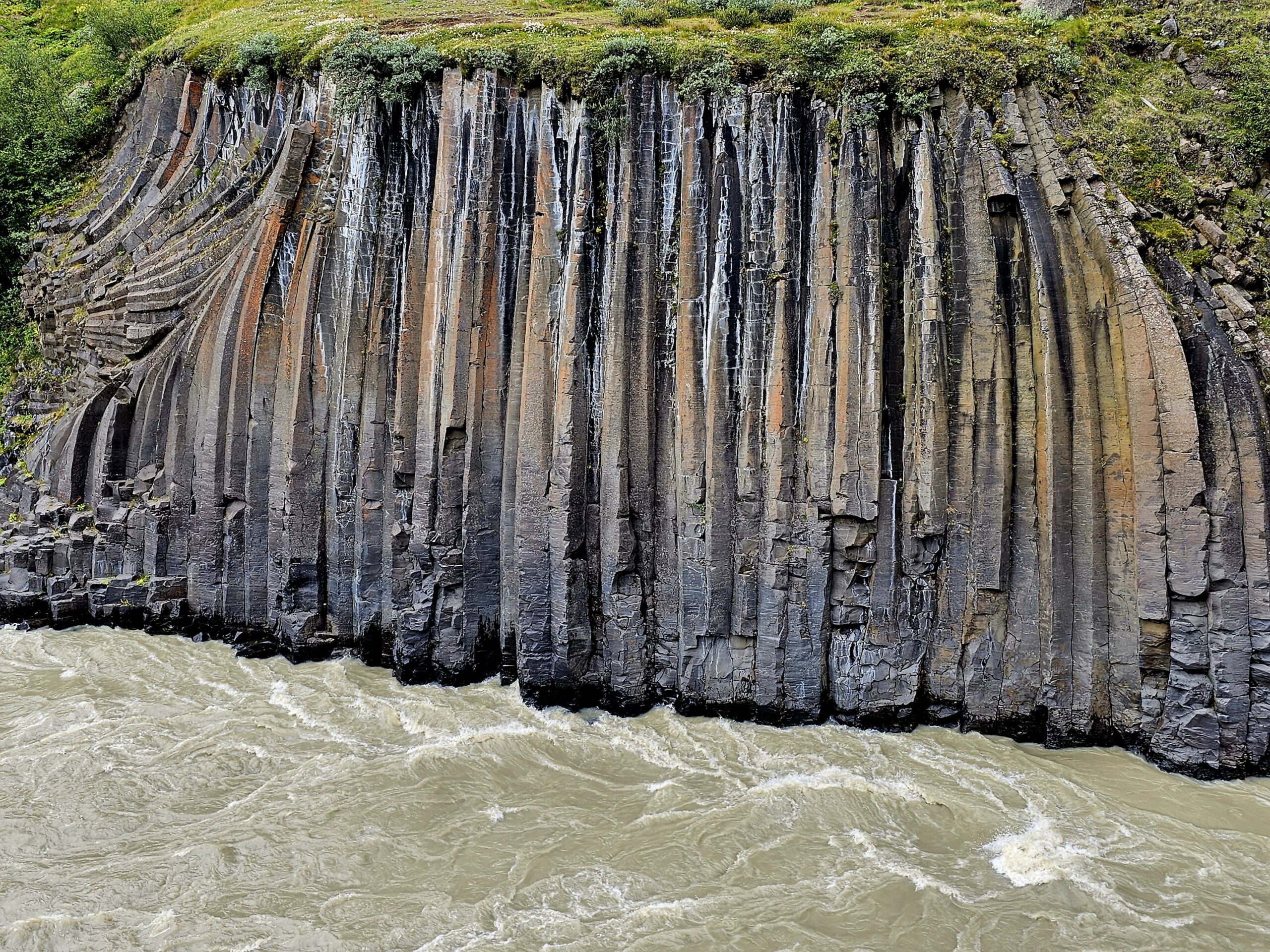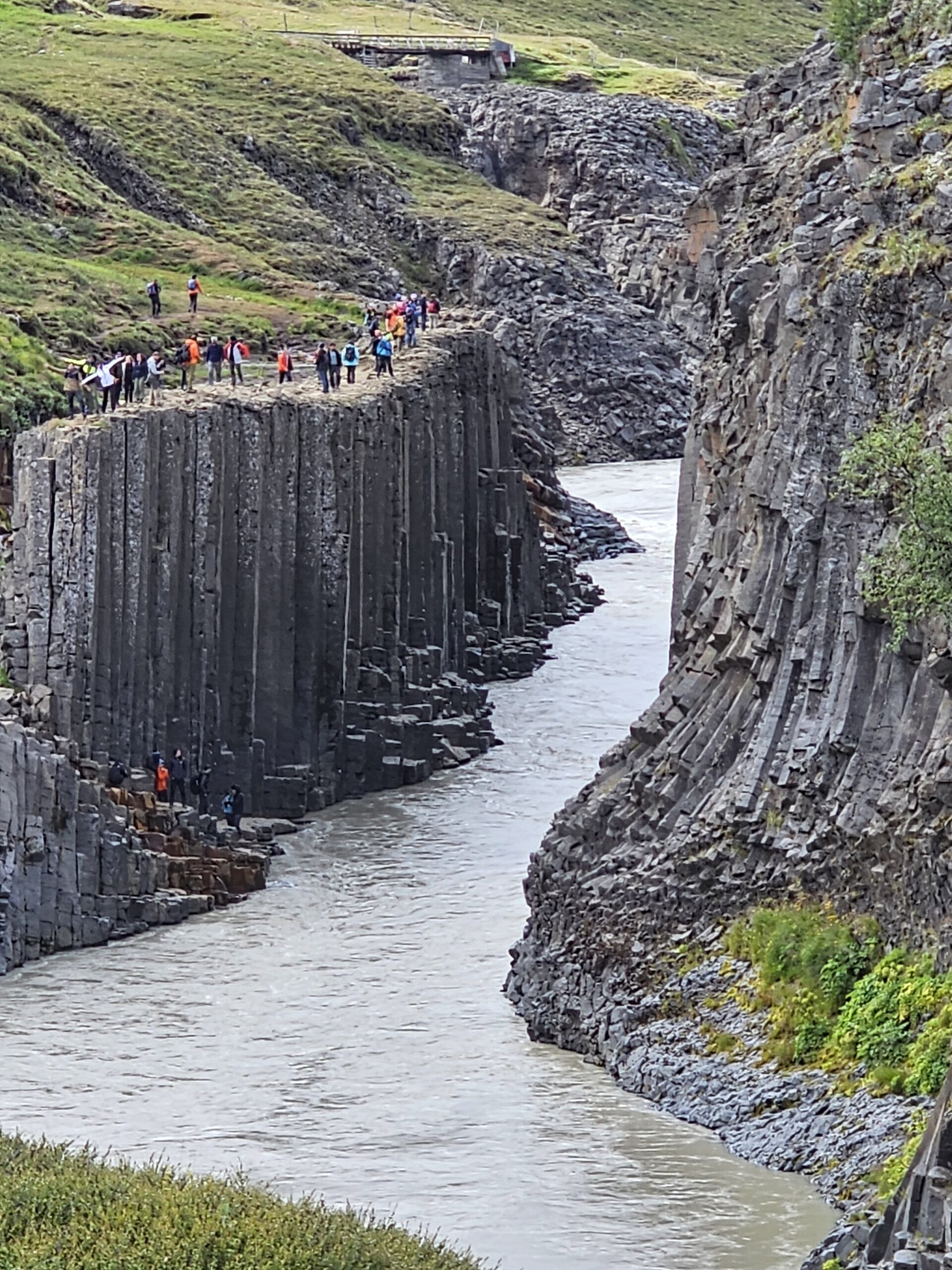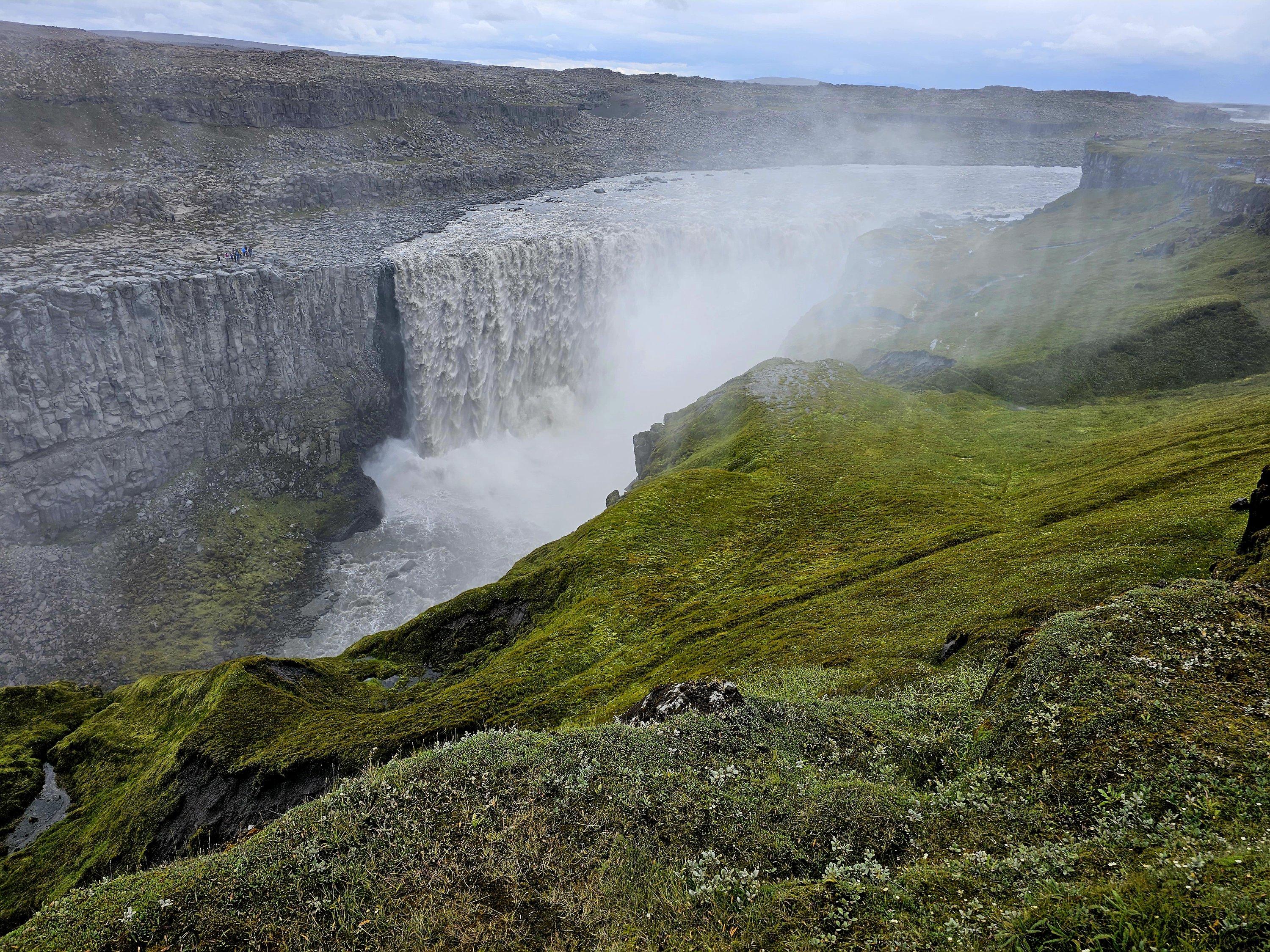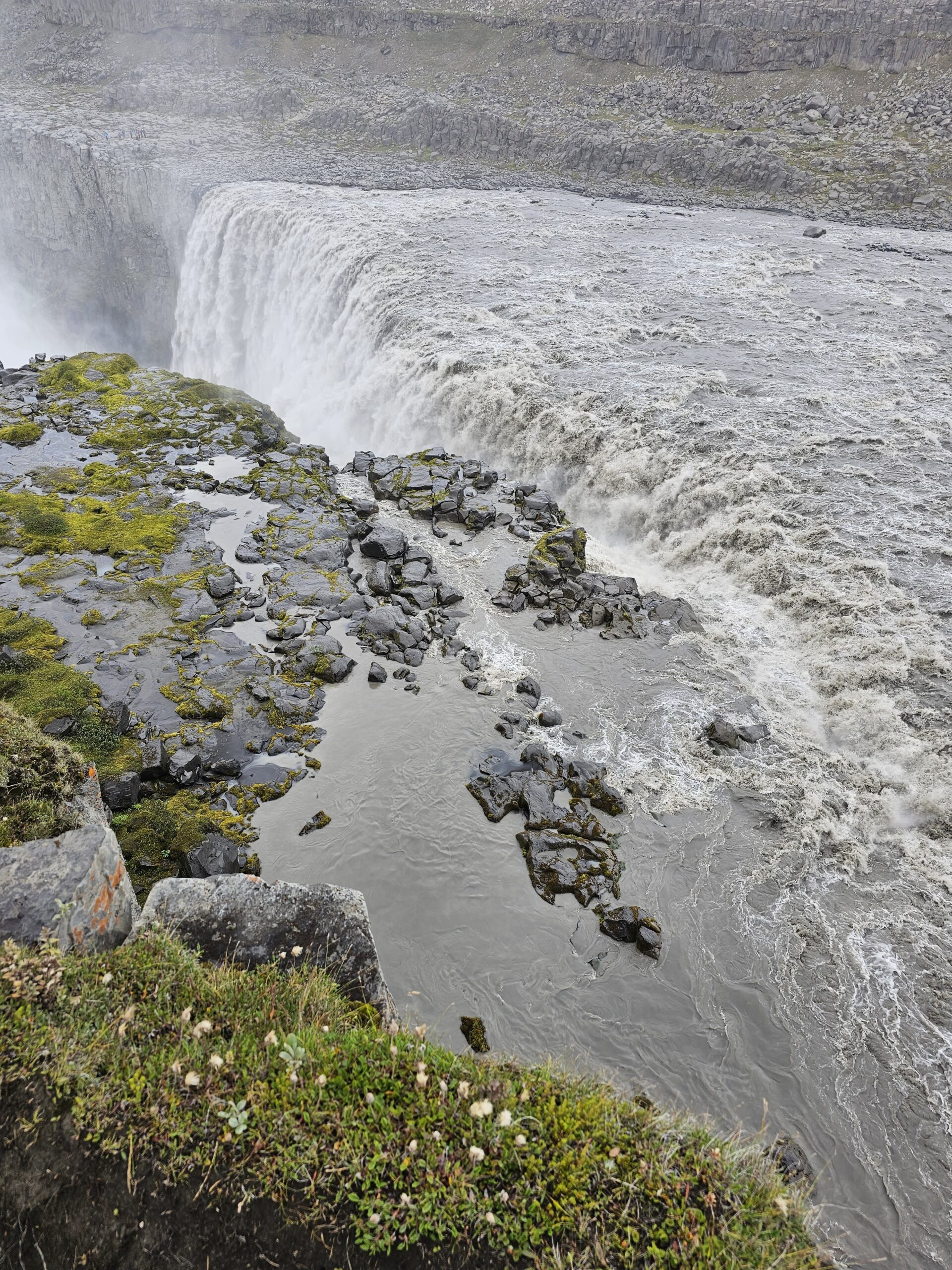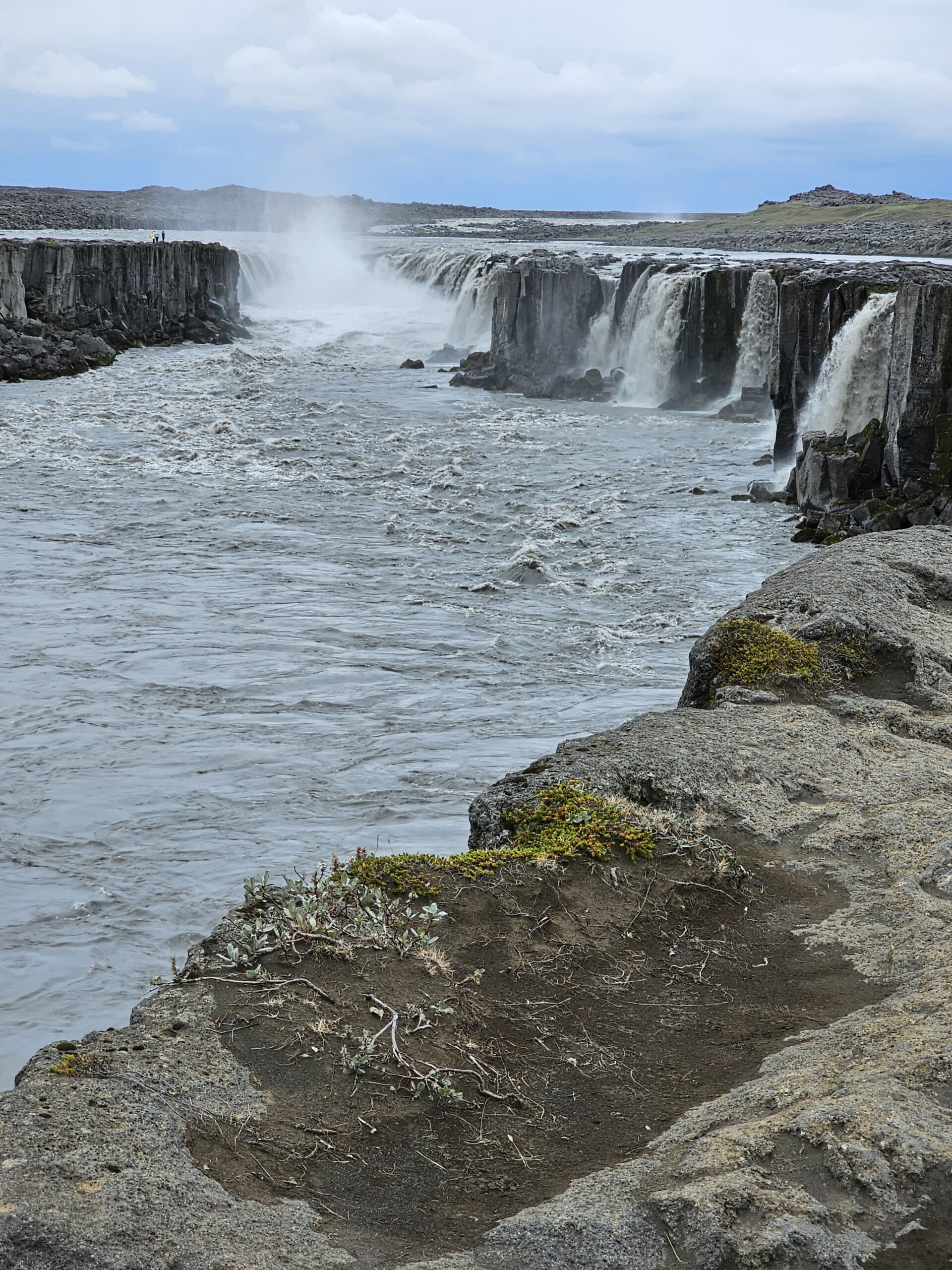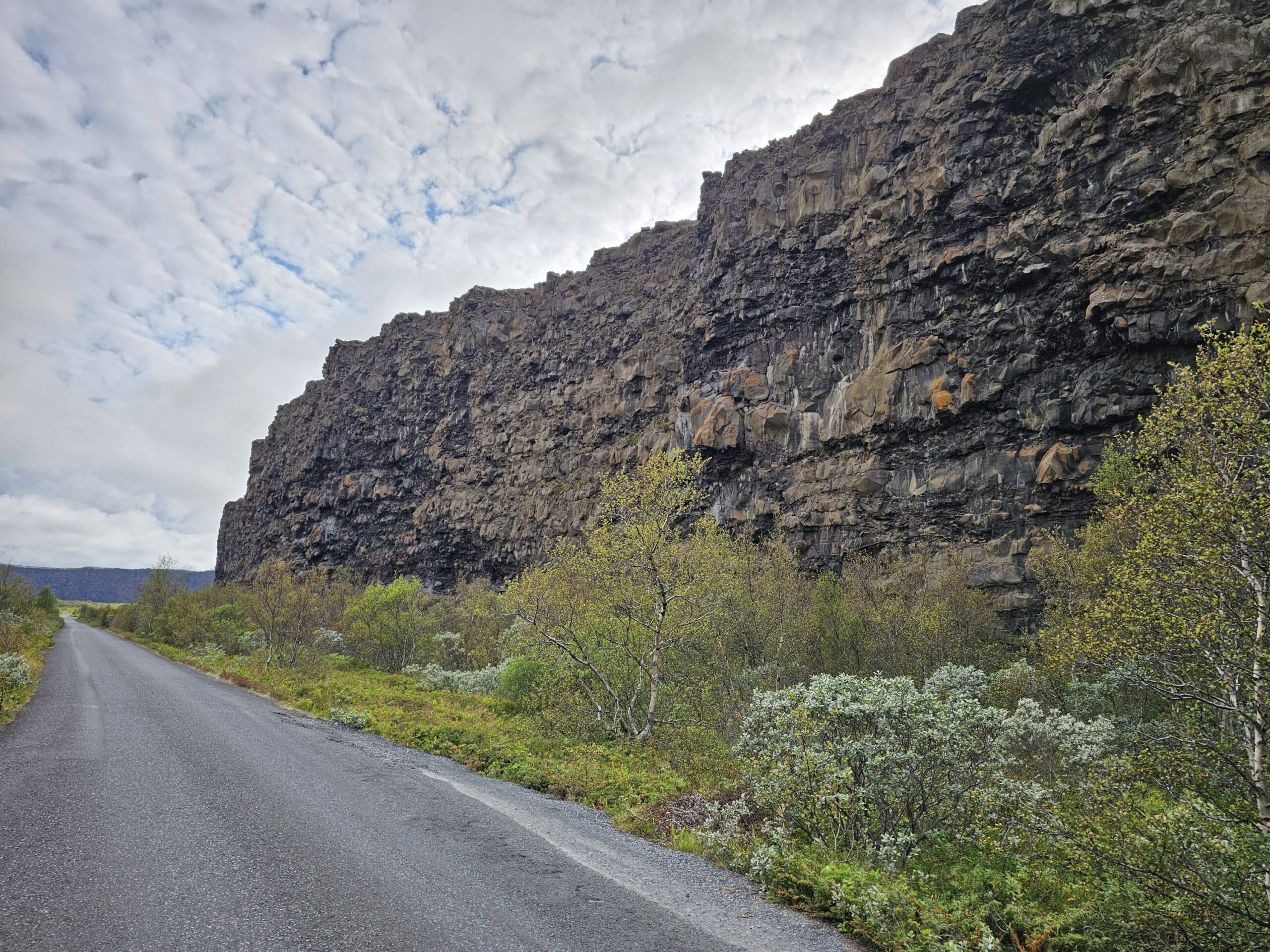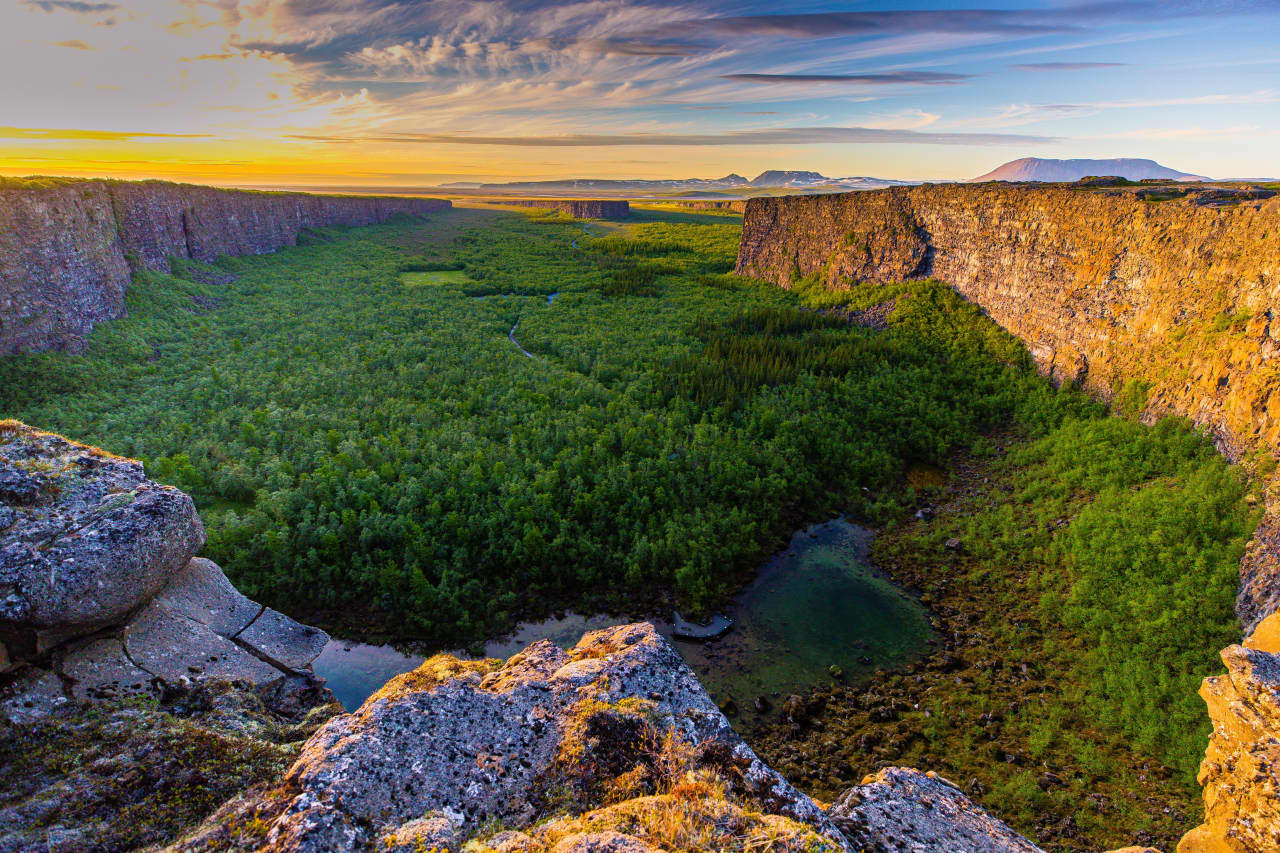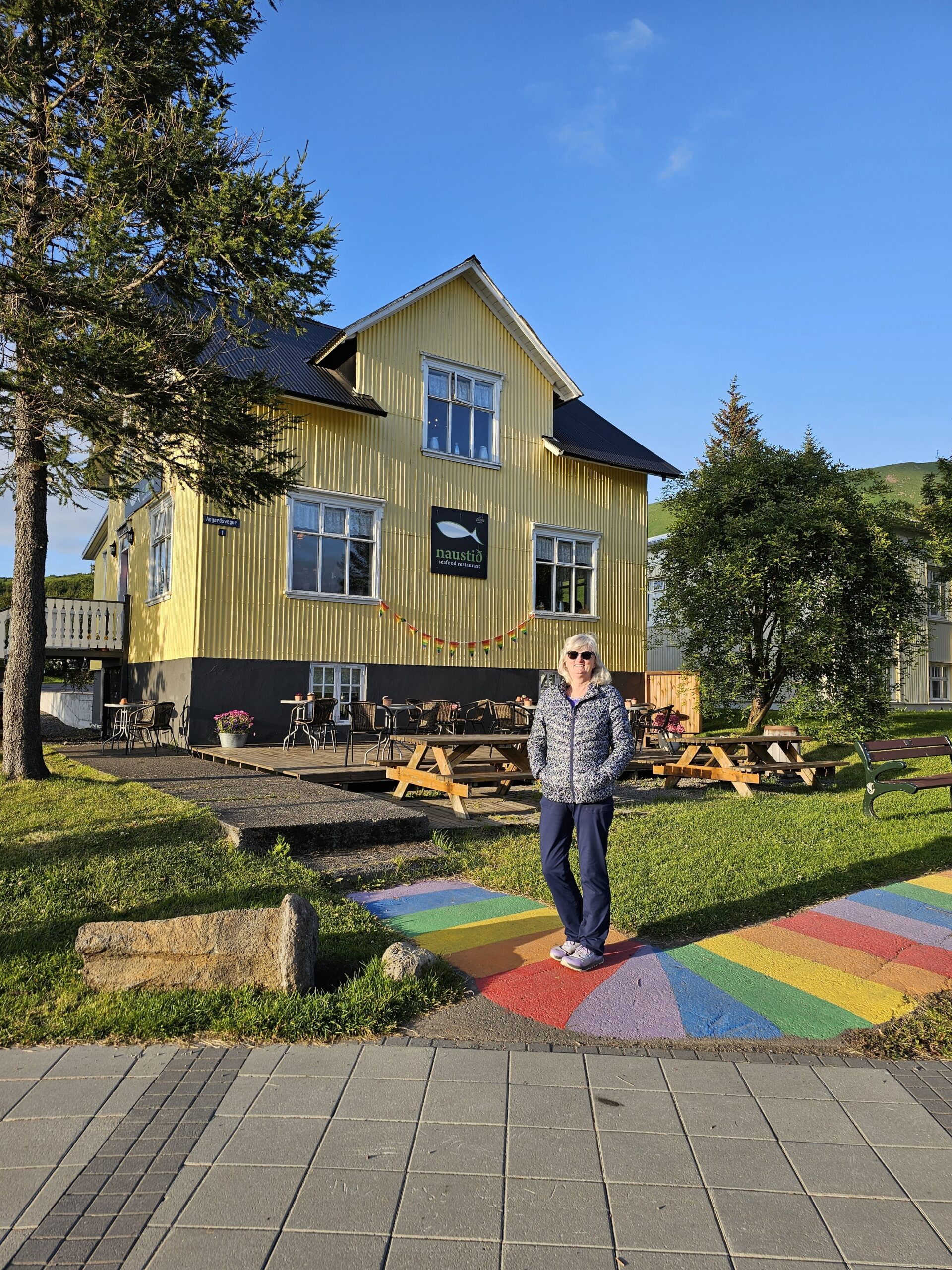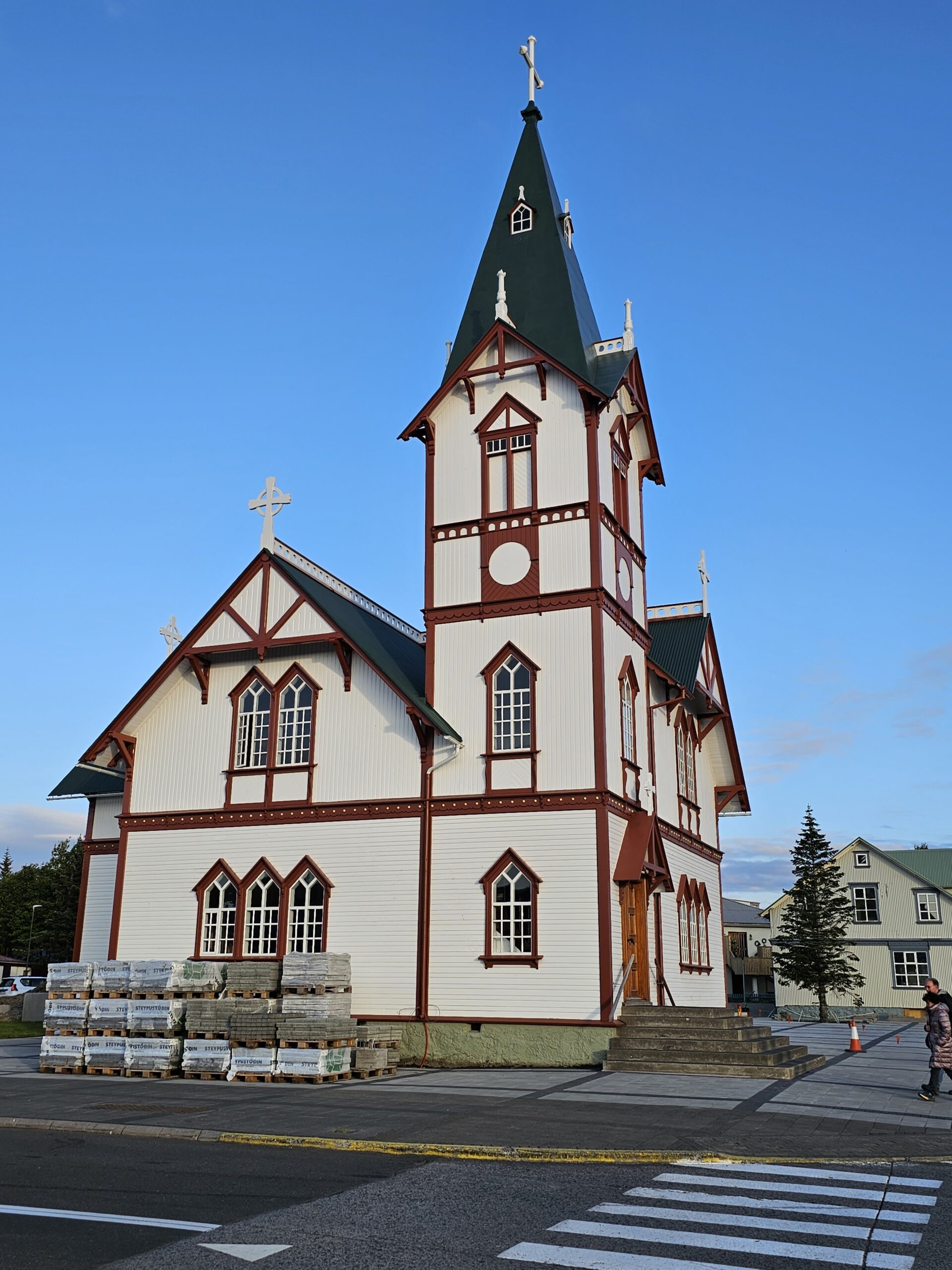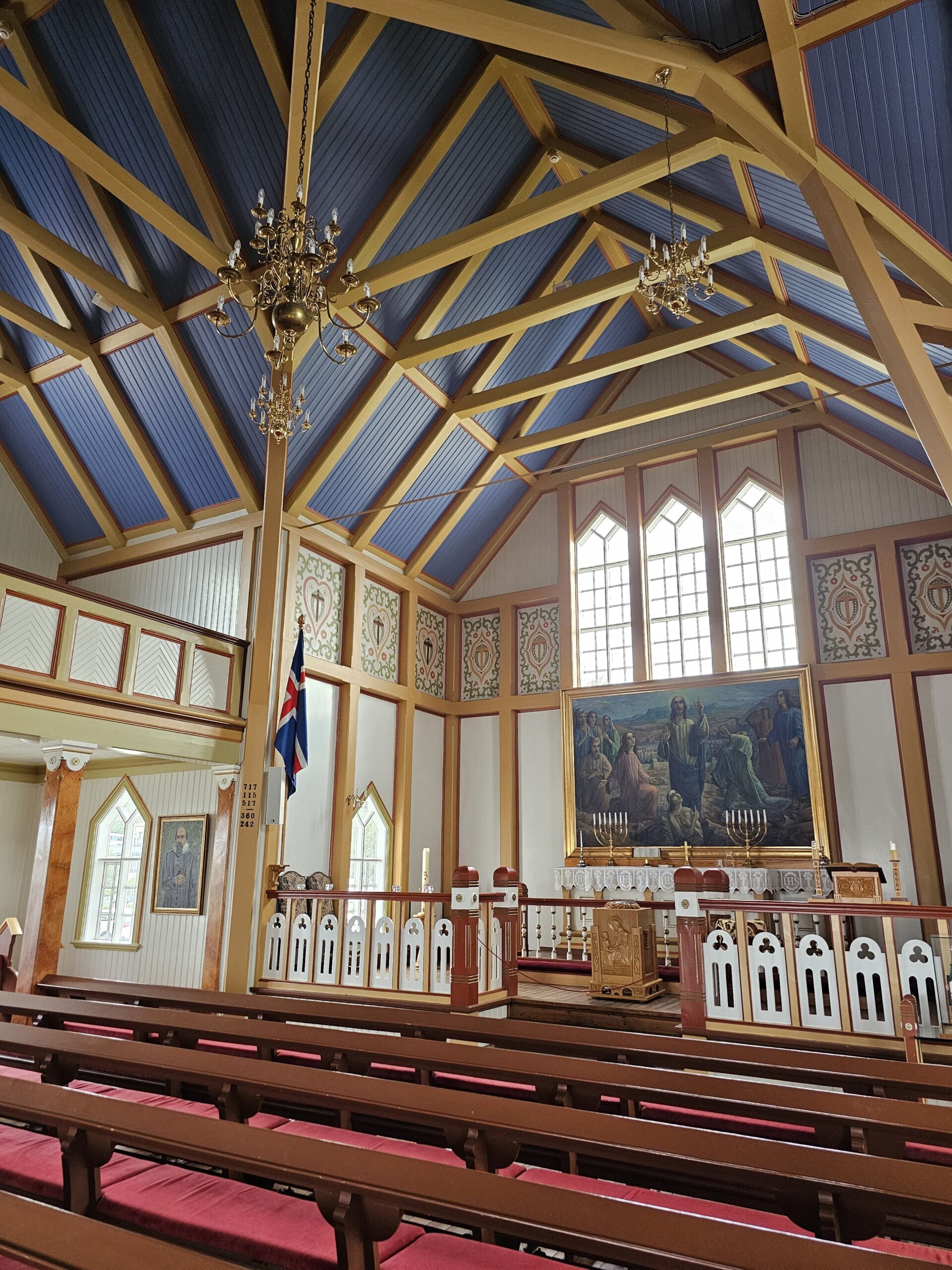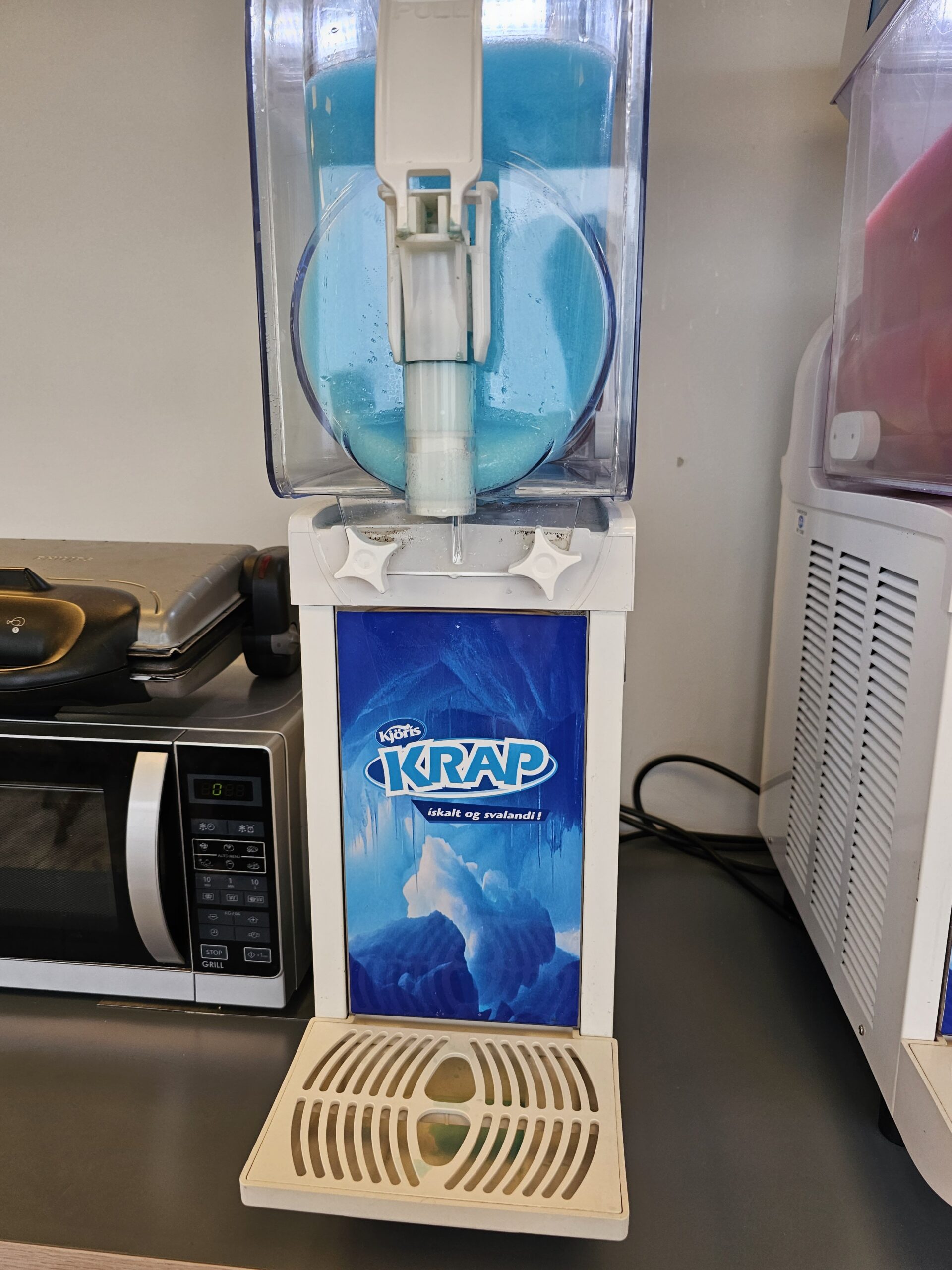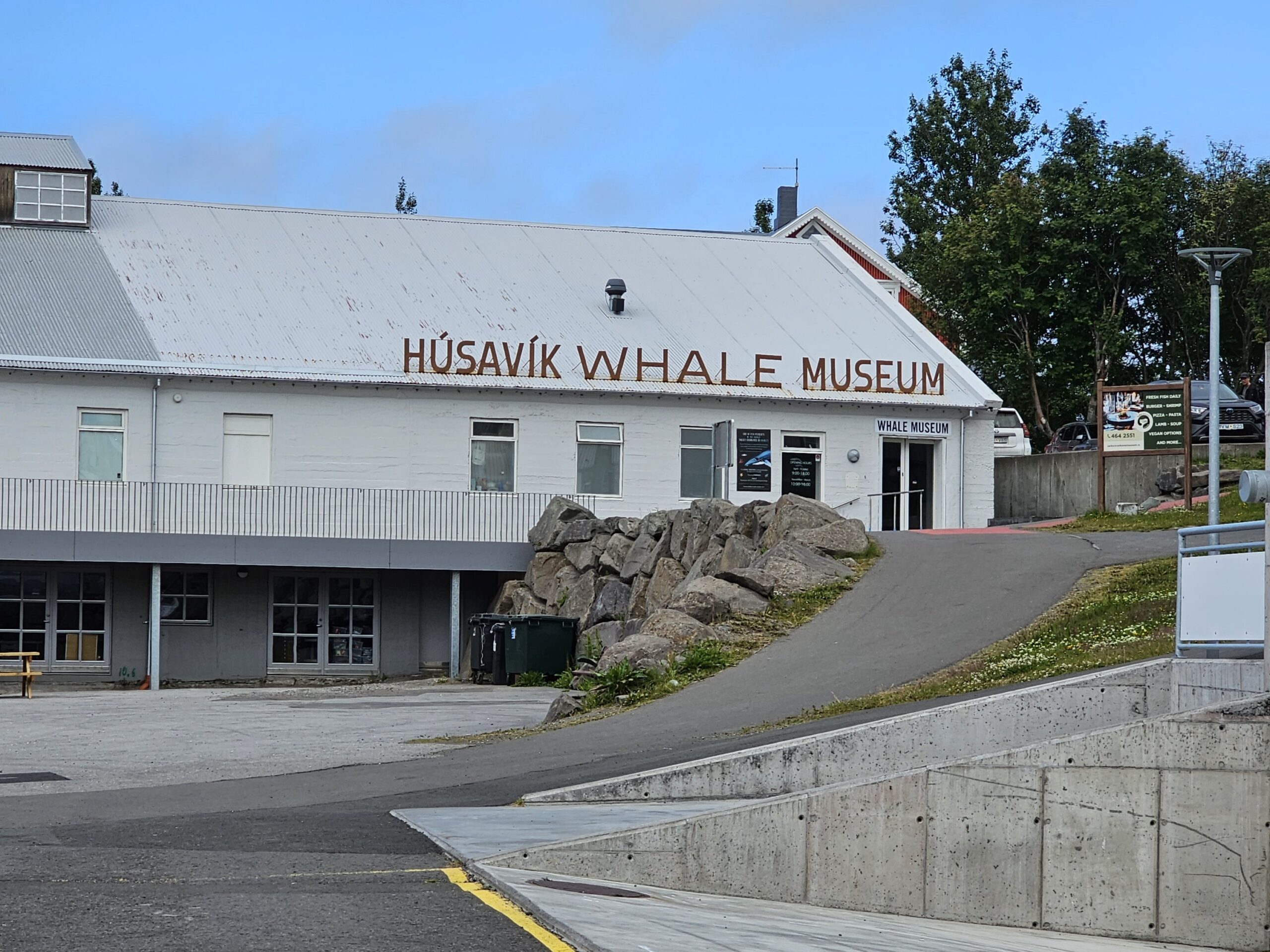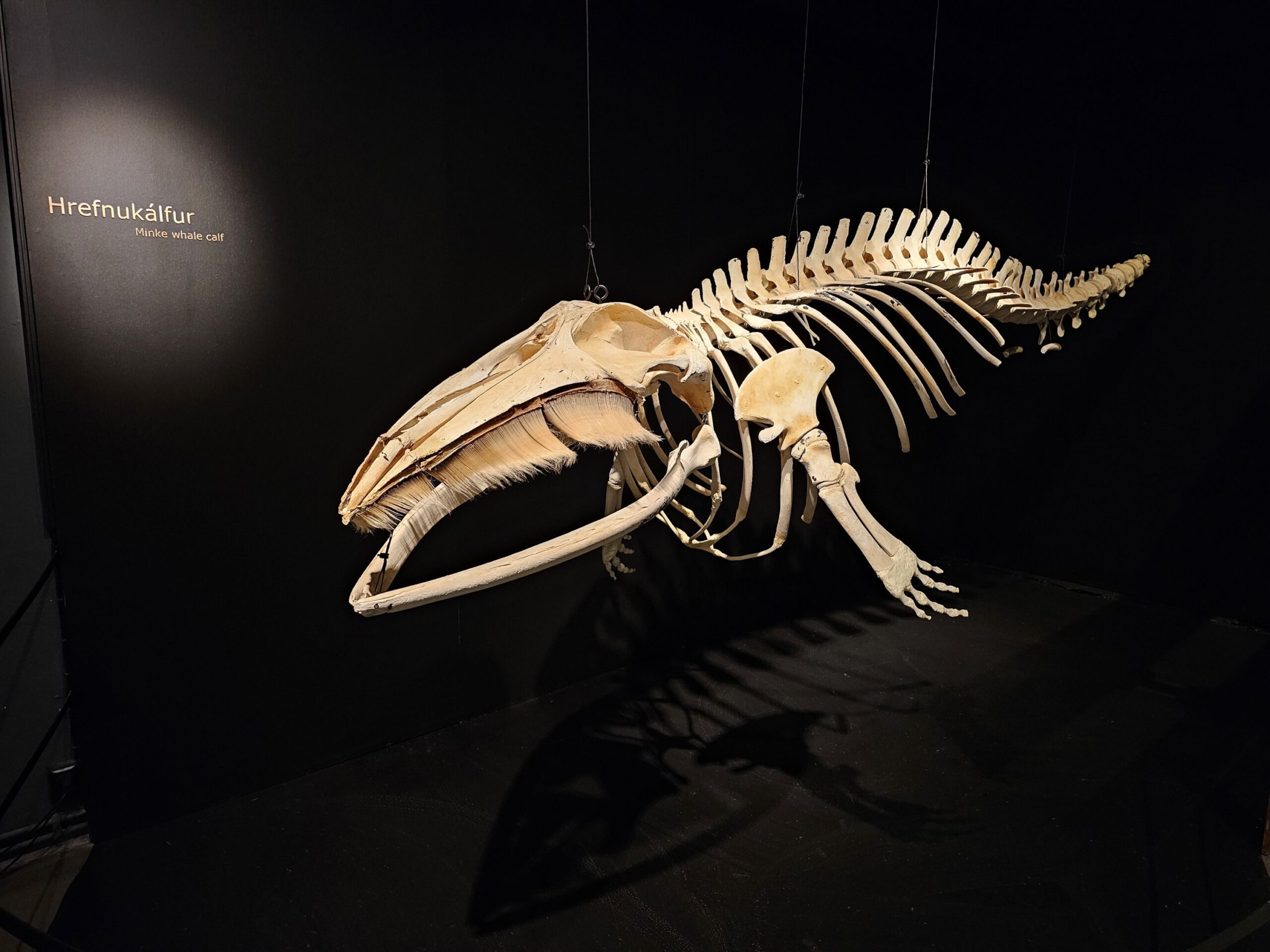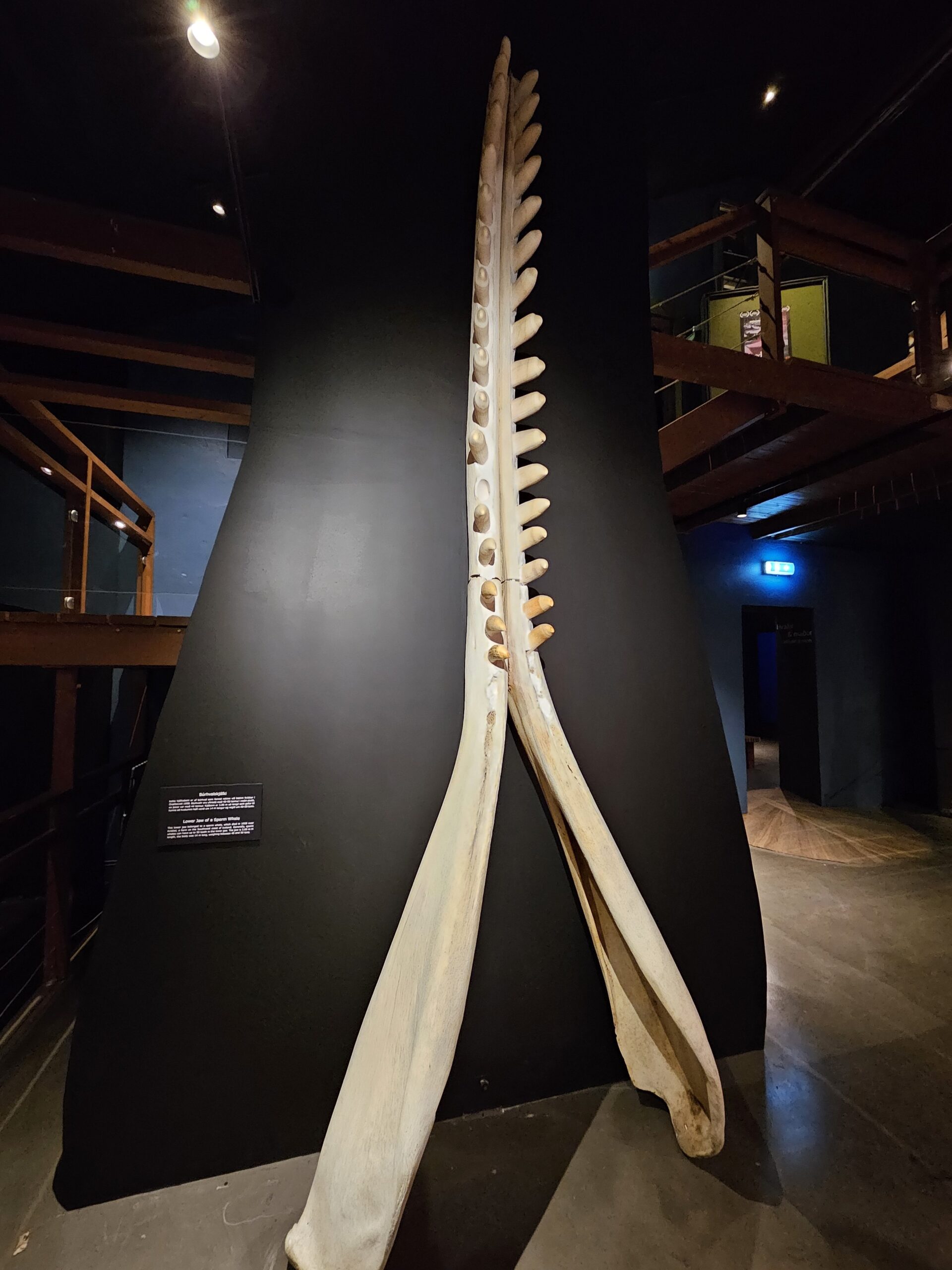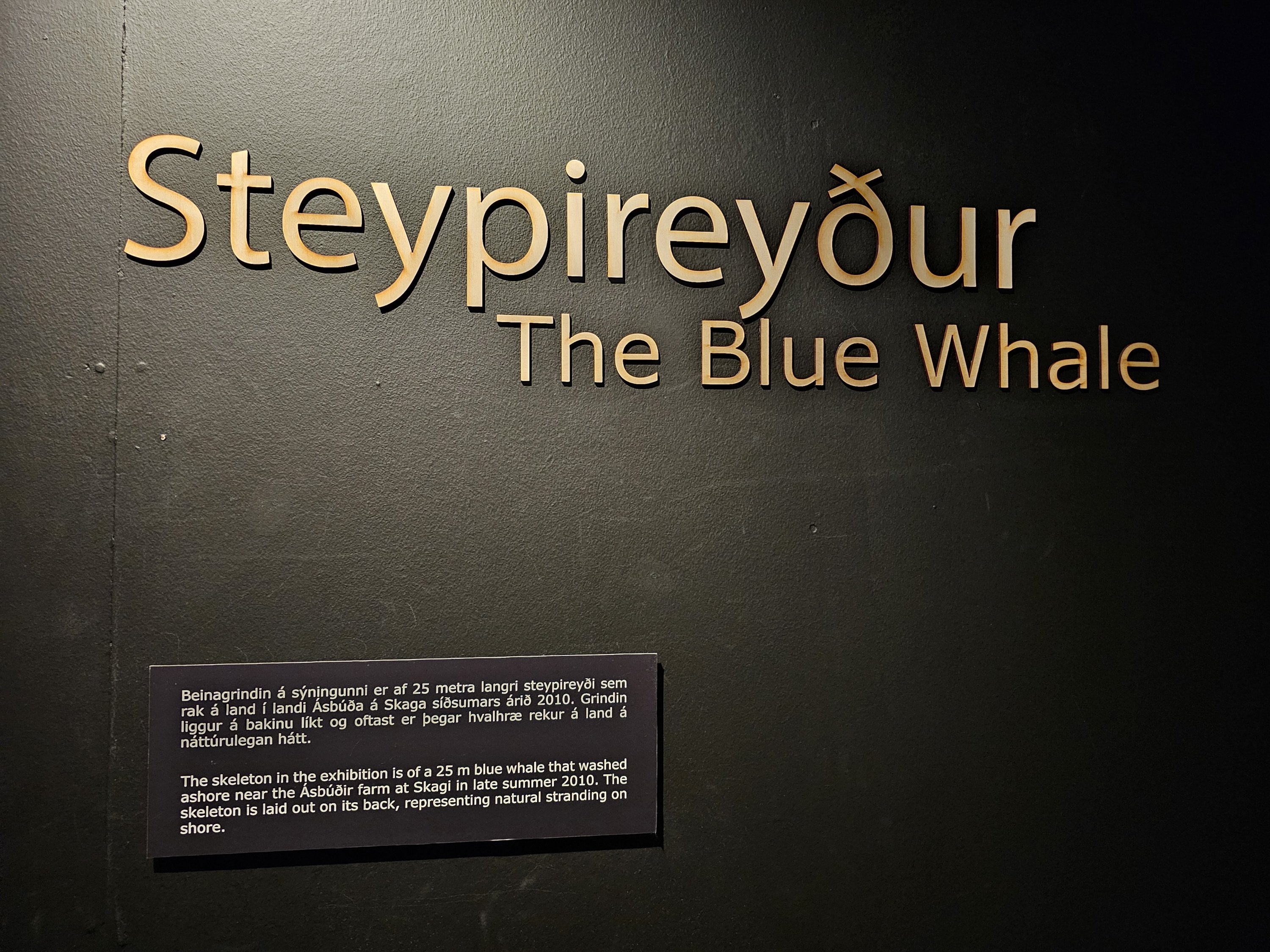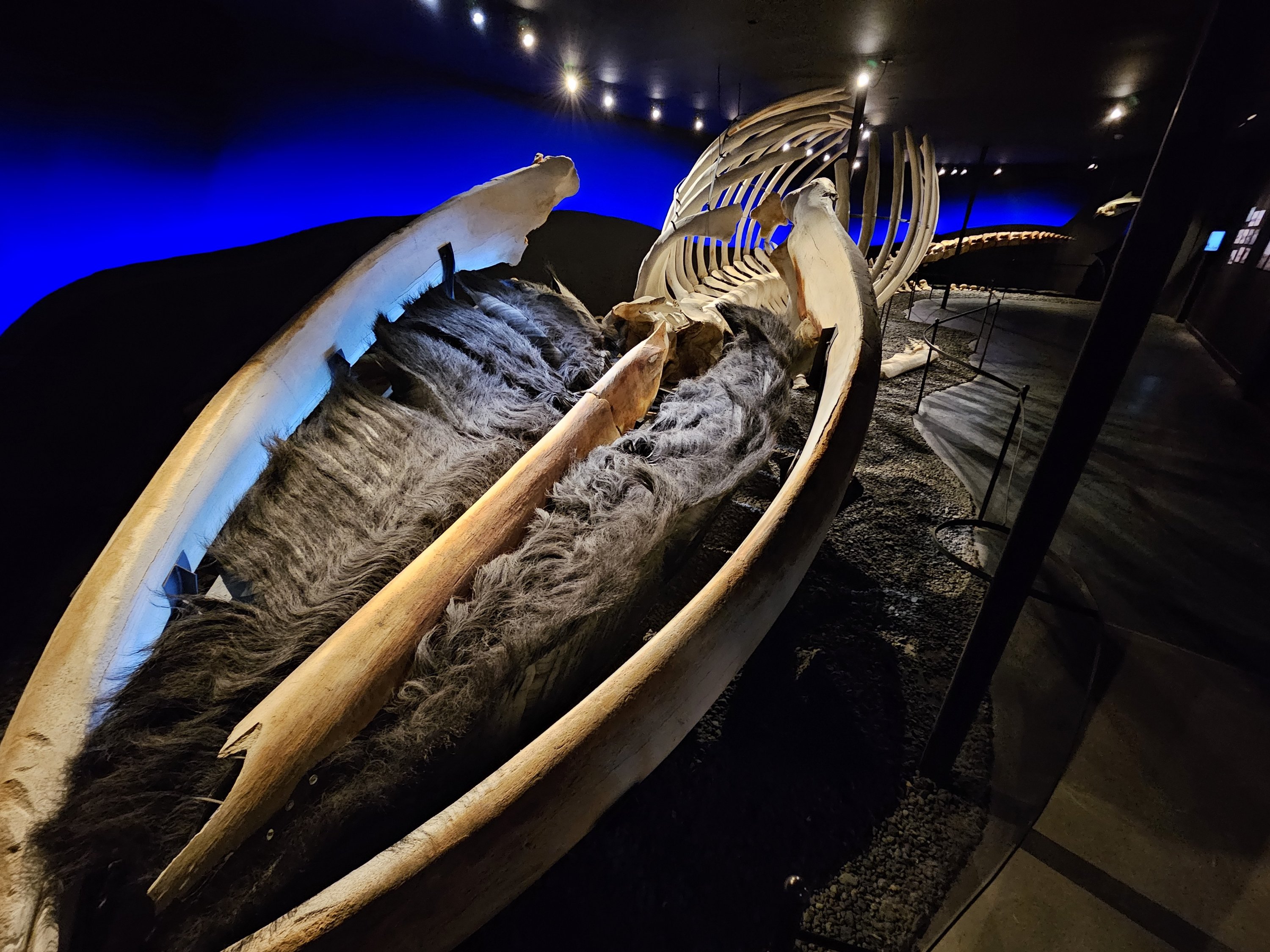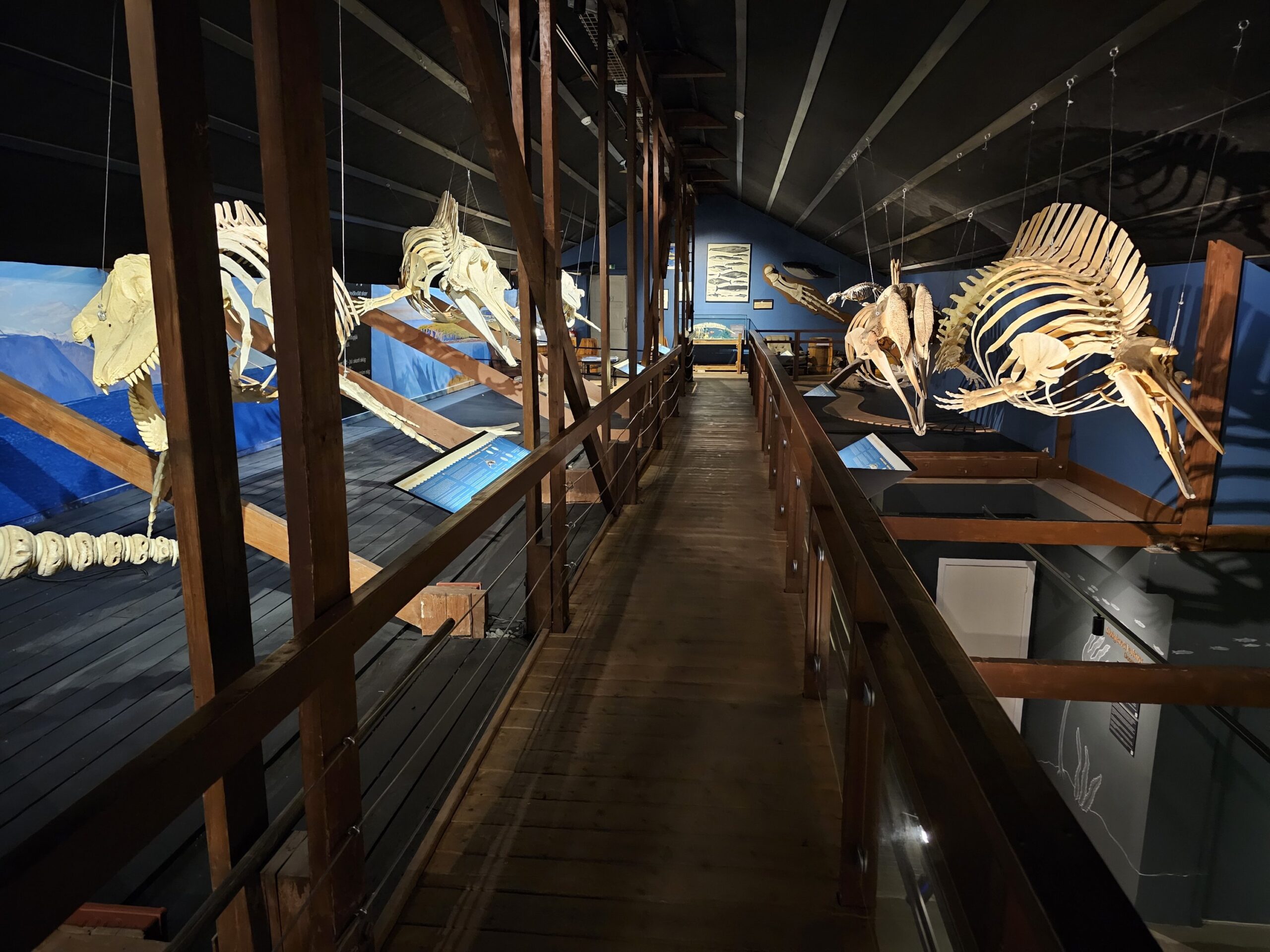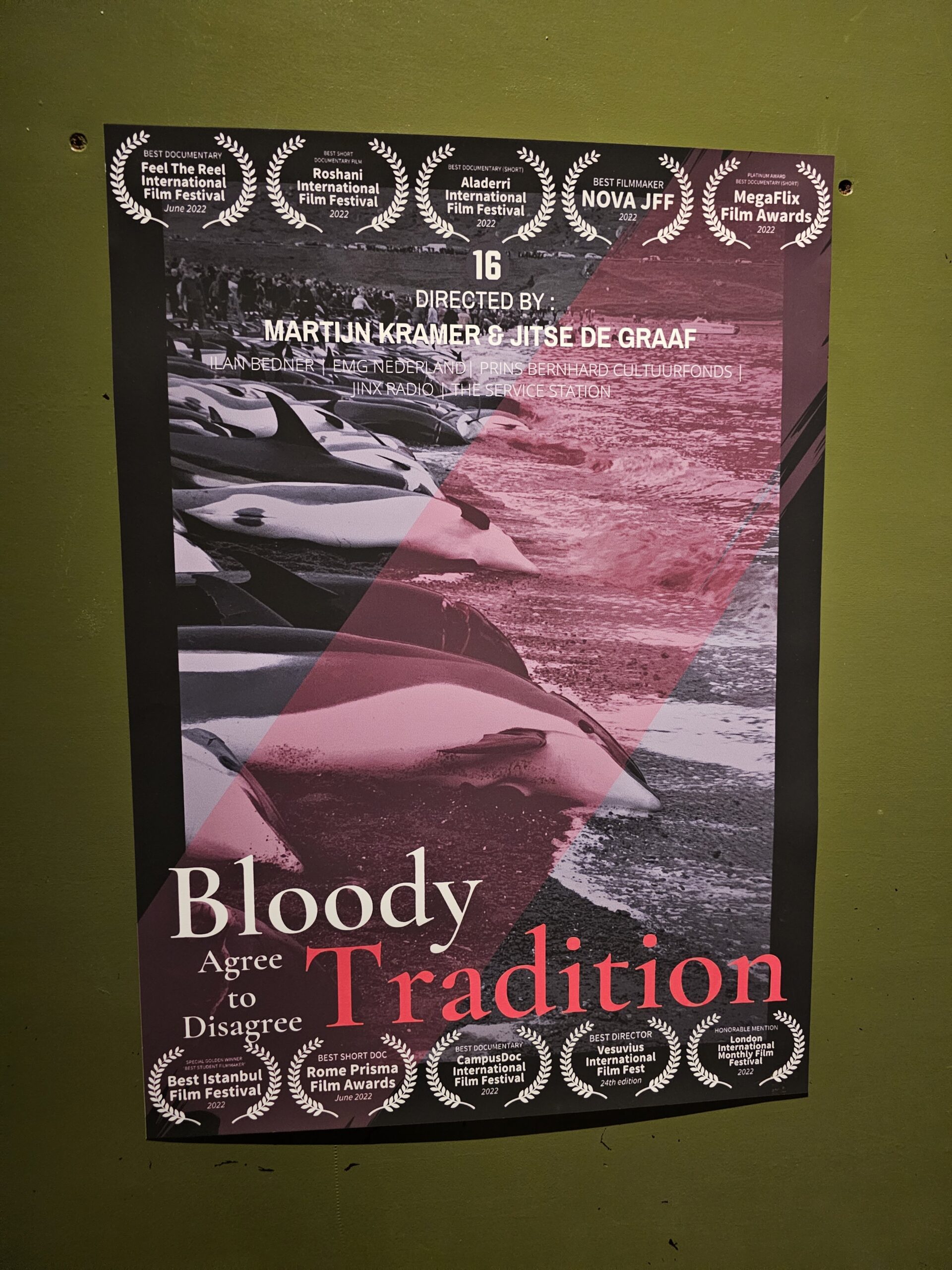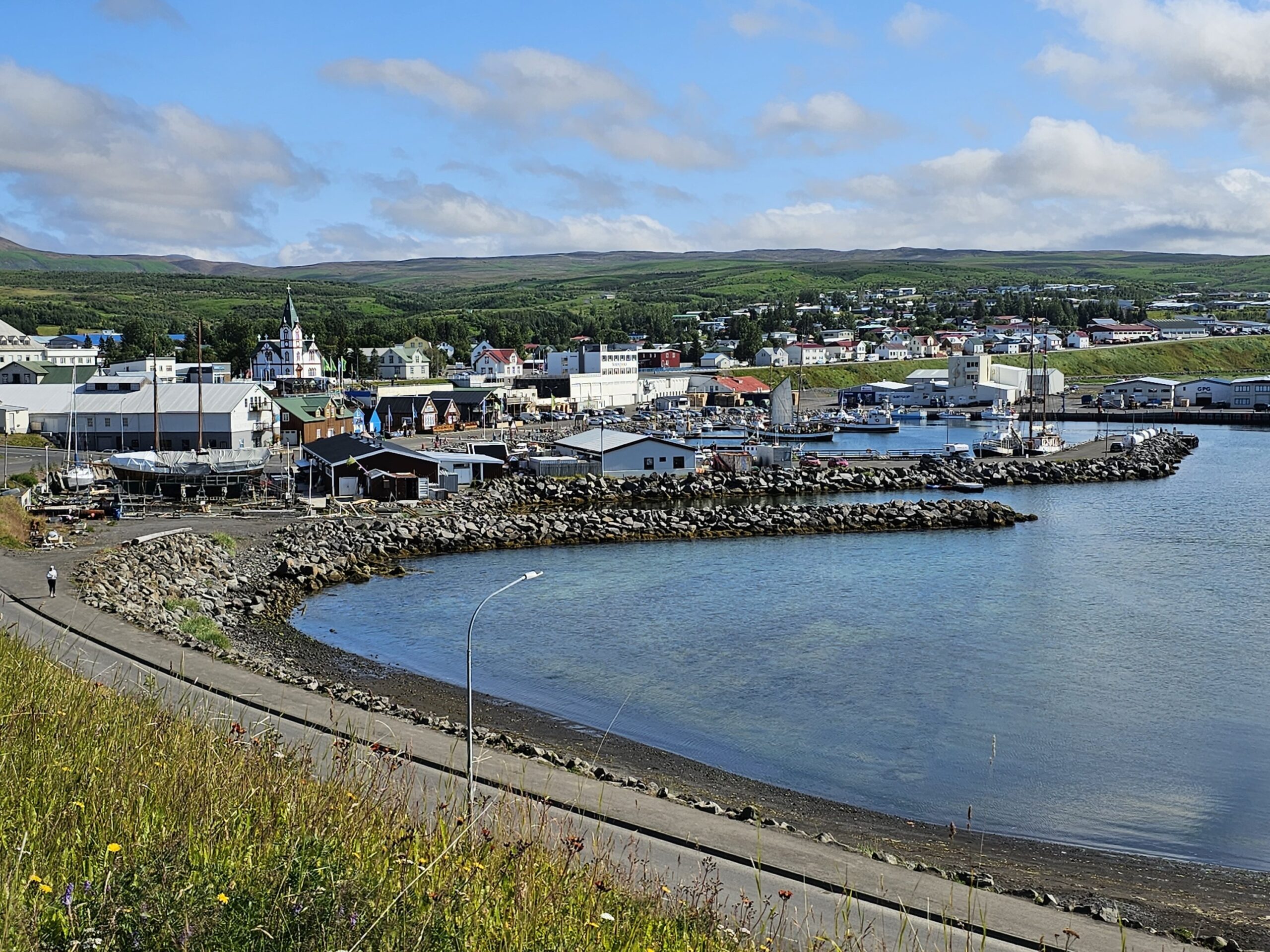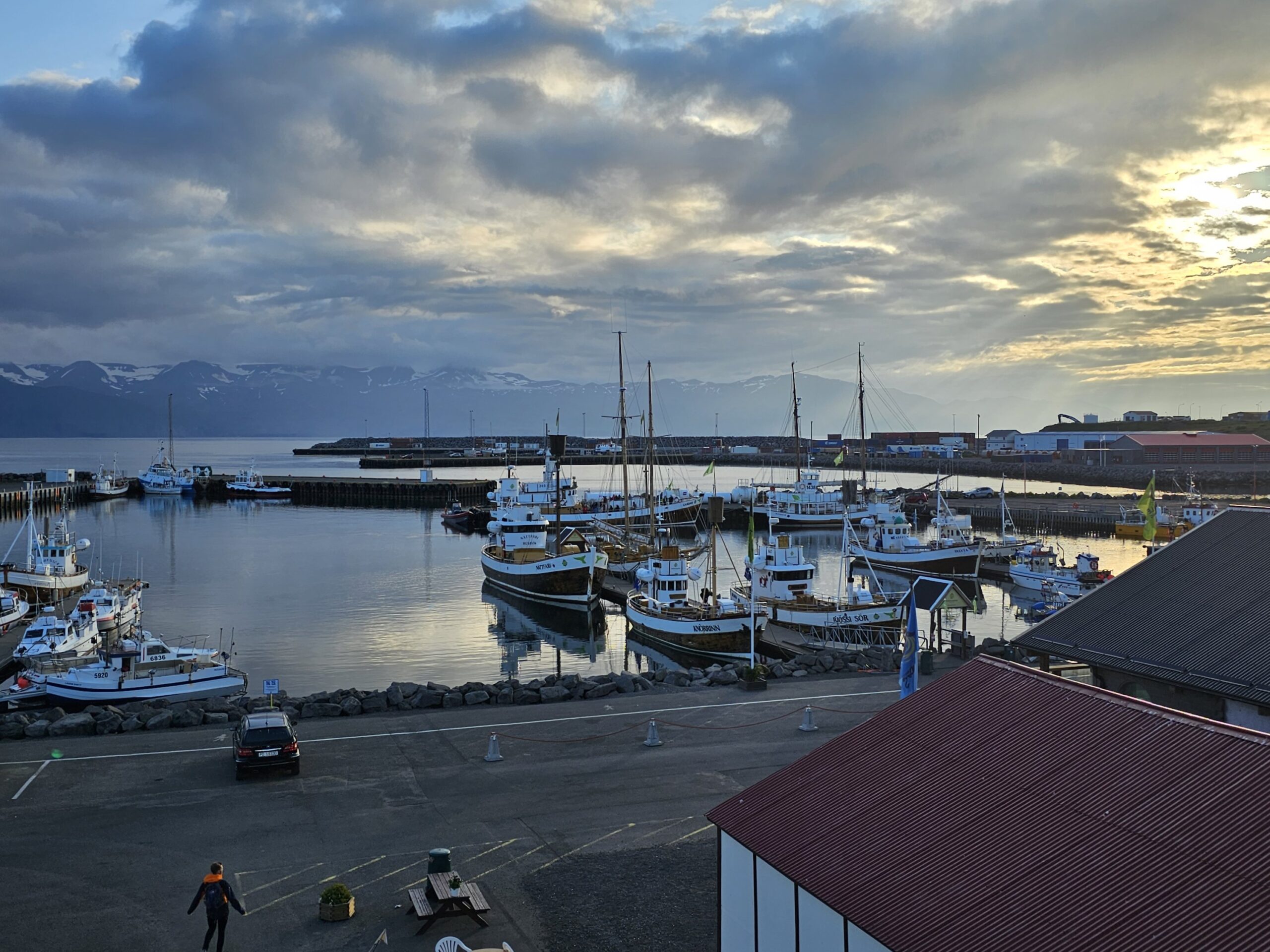On the north coast of Iceland, from Husavik to the Westfjords, there really aren’t a lot of highlights. This might explain why this is the least visited part of Iceland. On the drive we did see this beautiful mountain range, and a sign in front of them. The locals put this sign up to make it clear they are strictly “No Pylons”, meaning they don’t want to see any power poles running across their land.
With land as beautiful as this, I can understand their stance.
In the northern Westfjords, we stayed in the village of Patreksfjordur. We took a walk around the town, as it’s not very large, and I made a new friend. This cat welcomed us as we walked by what I assume is his house, and after a lot of attention, he decided to follow us down the street. The little dude followed us at least 100 yards to this bench, where he ended up falling asleep on my lap. What can I say, I’m a cat magnet!
Our first night there gave us this nice sunset.
The next morning we headed out on the peninsula directly across the fjord from Pateksfjordur. The first sight you run across is this shipwreck, the Gardur BA 64. This ship was launched in 1912 as a state-of-the-art whaling ship, but it changed owners over the years, until it was owned by an Icelandic company. It was deemed unsafe for service in 1981, and rather than scuttle the ship it was decided to run it aground where it remains to this day, rusting away.
There are multiple beautiful beaches as you drive along the peninsula.
This old C-117, the military version of a Douglas DC-3, was manufactured in 1944. This aircraft was instrumental in Iceland in 1973, evacuating people from the Westman Islands during the volcanic eruption that year. The plane was officially retired from the US Navy in 1977. There is a monument overlooking the plane honoring all the US servicemen who served in Iceland.
The adjacent Hnjotur Museum has a lot of items from the local area (whale bone tools, ballast from French vessels), but a big part of the museum dealt with a rescue of sailors from the British trawler Dhoon, that wrecked on the local Latrabjarg cliffs in 1947. The country even made a documentary about it in 1949, as it made international news. It was all in Icelandic, so we didn’t watch much of it, but I guess for it’s time it was good. Some of the same people who rescued sailors from the shipwreck acted in the documentary. This display honors all who were involved, including the women who fed and cared for the men after they were rescued.
This is a typical whaling boat for the area in the 1800’s. Looks way too small to me!
We then made our way to the Latrabjarg cliffs (where the previously mentioned shipwreck happened), which are well known for bird life, particularly Puffins.
We didn’t see more than a few Puffins up on the tops of the cliffs, but the views are incredible.
On the way back towards the parking lot, we did run across a few of the little guys. Most of them have left for the season, leaving just these stragglers behind.
This guy looks like he has something to say about being one of the last to leave!
We took a rather daring drive on a super steep dirt road, in the rain, to get to the next spot, Raudisandur Beach, which translates to Red Sand Beach.
The sand is reddish in color due to pulverized scallop shells. Trust me, this is not an easy beach to get to, particularly since there are no written instructions on where to get beach access. So, if you come here, go to Melanes Campground on the extreme southeast corner of the beach. Otherwise it’s a mile+ walk across mudflats and water.
Our second sunset in Patreksfjordur was much better than the first one! A definite “wow” moment!
On our second day we took a big circular drive near Patreksfjordur. The day was perfect, and the water was incredibly blue!
We saw this guy swimming along next to the roadway.
As well as this guy resting on a rock. When I come back I want to be a seal…laying around all day…what a life!
We then visited the Sea Monster Museum in Bildudalur, a rather hokey museum but it was all in good fun.
The interior entrance reminded me of something out of Knott’s Berry Farm.
They had these informative signs up that looked kind of like old west “Wanted” posters.
There were several videos you could watch of Icelandic people telling about the monsters they have seen. The stories had English subtitles….that were very poorly translated, but you could understand it. We are talking video from the 70’s and 80’s of people telling their tales of various different monsters that came out of the deep. Apparently copious amounts of alcohol were readily available at all times…the good old days!
The below depicts a story of a cow that had a monster calf that had to be put down. The cow sticking out it’s tongue is just bizarre. Excellent family time stuff!
These next two photos depict some of the most often seen sea monsters in Iceland. The first one is the “Shore Laddie”, the most frequently sighted, with hundreds of stories dating back to the 18th century. There are stories where he has tried to mate with sheep, as well as having an affinity for pregnant women.
I’m just gonna say, it looks like a rabid dog to me. Remember, these people didn’t have contact lenses in the 18th century. The last sighting was reported in 2014. No cell phone video?
This one is called the “Merman”, said to be one of the ugliest beasts ever seen. People were said to have gone mad just looking at his face.
It’s no coincidence that he’s the spitting image of John Fetterman.
Ok, time to exit the ugly and find some beauty. We drove about 10 minutes northwest and found what turned out to be our own private beach.
It’s going to be very difficult to adjust the real world and the lack of daily scenes like this!
Our last day in Patreksfjordur we found our way up onto the avalanche safety wall they are building above the village.
The wall will is under construction, and will push any snow that comes down the adjacent mountain into this walled area and funnel it into the harbor.
Even though the construction isn’t done yet, they built this platform, so we had to go up and check it out.
Up next, we take a ferry across Breidafjordur Bay to the Snaefellsnes peninsula, where we will spend our last few days in Iceland. Sad face emoji.


